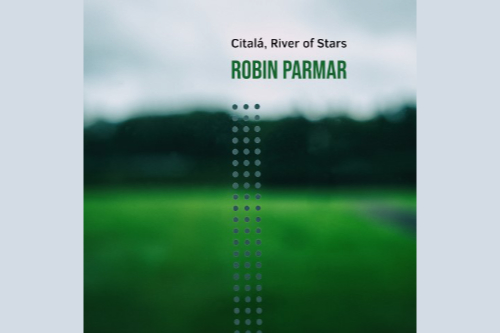
Citalá, River of Stars
Citalá, River of Stars is my latest exploration of slowly-changing harmonic music. I used aleatoric patterns of notes in often unusual modes, each selected to evoke a different star.
December 2023
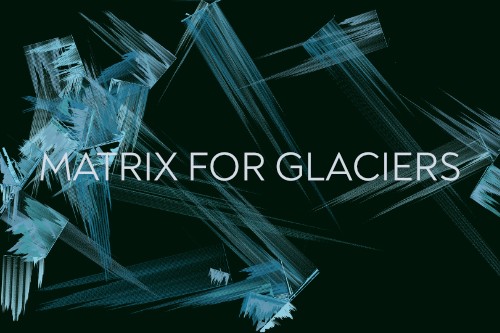
Matrix for Glaciers
This updated version of “Music For Glaciers will be diffused at the Beyond Listening International Symposium on Sonic Ecologies, Moholy-Nagy University of Art and Design, Budapest, 22-25 November 2023.
November 2023

Everything was singing
“Everything was singing” is a video installation that repurposes the footage of Red Desert (dir. Michelangelo Antonioni, 1964) to demonstrate an ecological theme. The protagonist resists every attempt at erasure by making herself an integral part of the places she inhabits.
November 2023

Stroboscopic rhythm as chromaesthesia in Curgenven's Agenesis
This paper situates Robert Curgenvens audiovisual performance Agenesis in the history of synaesthetic experiments and stroboscopic effects.
October 2023
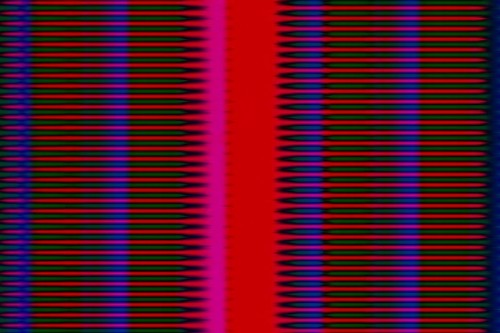
Bytebeat Metabiosis
“Bytebeat Metabiosis” will premiere at MANTIS (Manchester Theatre in Sound) Festival, University of Manchester, 28-29 October 2023.
October 2023
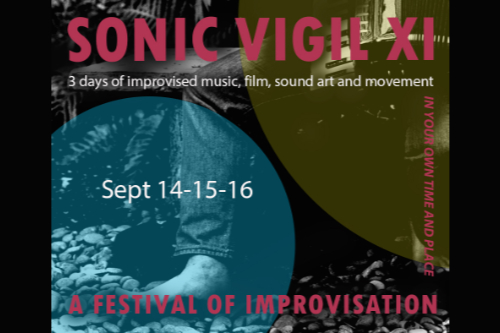
Sonic Vigil 11
Sonic Vigil is a three day festival of improvised music that returns after a long break. The festival culminates in a six-hour group improvisation with many wonderful folk including invited guest David Toop.
September 2023
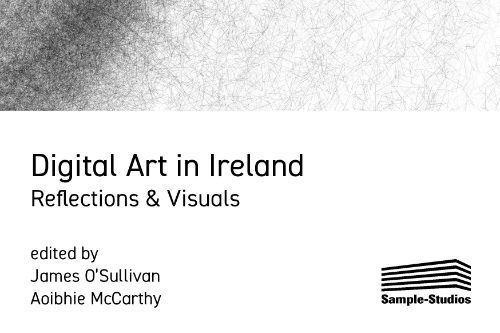
What Digital Angst Reveals
My contribution to the book Digital Art in Ireland: Reflections & Visuals.
August 2023
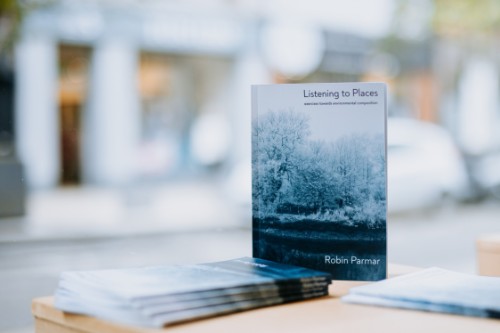
Why I Wrote Listening to Places
At the 2023 World Forum for Acoustic Ecology Conference I presented a talk on my motivation for writing the book Listening to Places.
March 2023

Periphery
Periphery was composed in 1999, but my first live performance took place 24 years later, at Music on Tap, The Commercial, Limerick.
February 2023
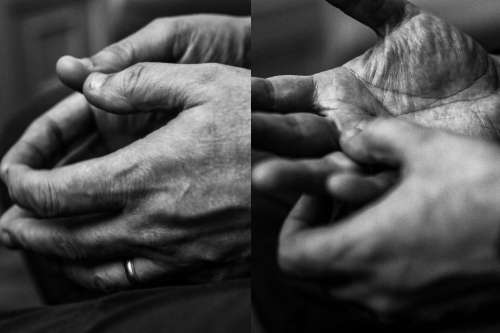
Tender Glance
“Tender Glance” is an excerpt from an improvised performance at Sonic Vigil 8 (St. Anne’s Church, Cork, 2014). This composition was played at Silence Festival Internazionale di Musica Acusmatica, Cittadella Mediterranea della Scienza Bari, Italy.
December 2022
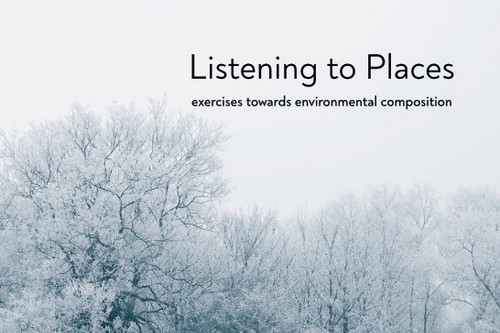
Listening to Places
My book Listening to Places: exercises towards environmental composition (Void Gallery, Derry, 2022) is a collection of 36 practical exercises designed to enhance appreciation of our nuanced and fascinating auditory environment.
July 2022
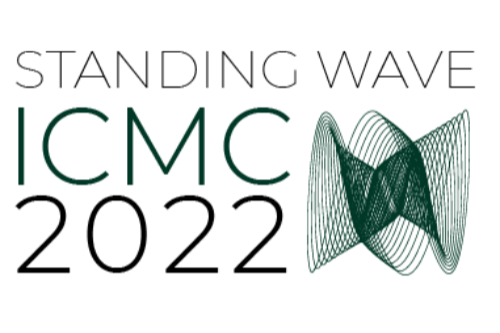
Co-Chair of Music Panel for ICMC 2022
The International Computer Music Conference is the largest of its kind in the world. For ICMC 2022 I was Co-Chair of the Music Panel with Neil O’Connor.
July 2022

River Shannon Soundwalk
The River Shannon Soundwalk is a curated collection of 20 submissions, placed on a gorgeous walking route that explores the University of Limerick’s place on the riverbank.
July 2022

Sonic Practice Now
I was guest editor for the Sonic Practice Now issue of Interference: Journal of Audio Cultures. In the fallout from COVID-19 this process took two years to complete.
July 2022
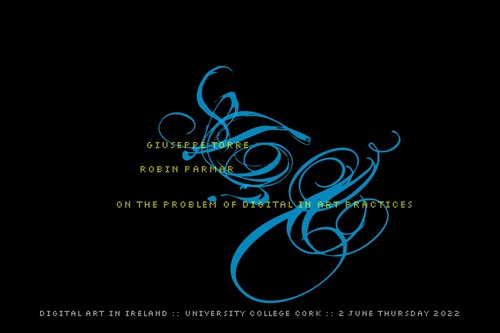
On the problem of DIGITAL in art practices
Giuseppe Torre and myself presented a panel discussion/debate “On the problem of DIGITAL in art practices” at the Digital Art in Ireland conference, University College Cork.
June 2022
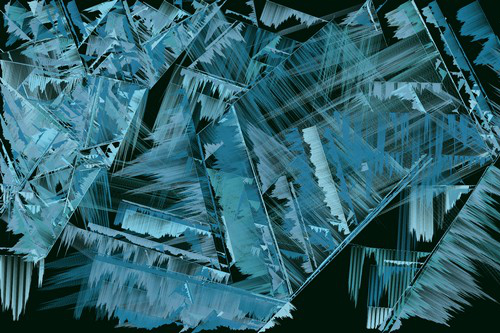
Music For Glaciers
This composition is created using two chaotic oscillators. These are played within a performance space in order to activate the room modes. Various psychoacoustic affects are created, most evident when the listener moves from place to place within the room.
April 2022
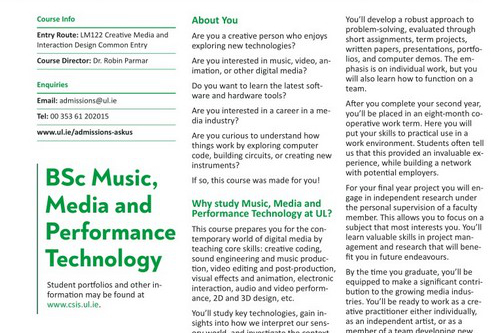
Course Director of MMPT
I have taken on the responsibilty of being Course Director of the B.Sc. in Music, Media and Performance Technology (MMPT), University of Limerick. Over the next few years I hope to make this course more relevant and appealing to contemporary students.
April 2022
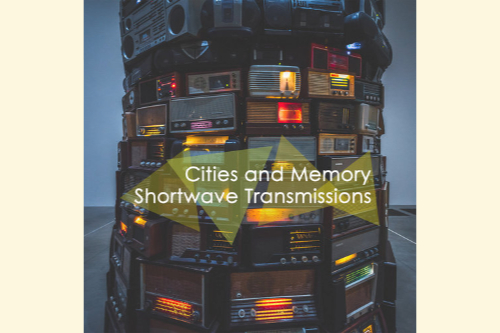
Spectral formation (yes to peace)
“Spectral formation (yes to peace)” was created for Shortwave Transmissions, a project of Cities and Memory.
February 2022
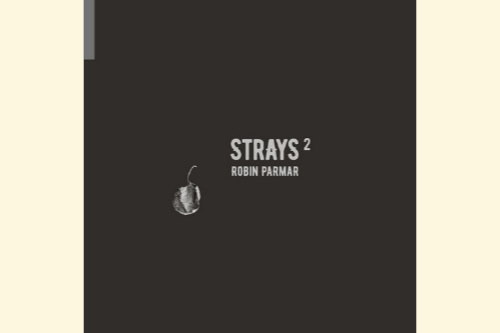
Strays 2
STRAYS is a two album set that spans a decade of electroacoustic compositions. This anthology collects tracks from compilations and collaborative projects, unreleased experiments, and excerpts from live performances. It acts as a definitive statement of my compositional praxis in the last decade.
January 2022

Strays 1
STRAYS is a two album set that spans a decade of electroacoustic compositions. This anthology collects tracks from compilations and collaborative projects, unreleased experiments, and excerpts from live performances. It acts as a definitive statement of my compositional praxis in the last decade.
December 2021

Lullaby of the Nymphs (Magicicada Brood X)
The composition “Lullaby of the Nymphs” was released on Cicada 17 Requiem Brood (Camembert Électrique, France).
October 2021
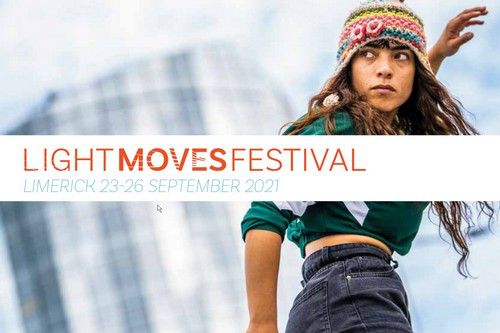
Visual Music Panel
Together with Jürgen Simpson I curated a panel discussion with Aimee Mollaghan and Max Hattler, accompanying a film screening at the Light Moves Festival 2021.
September 2021
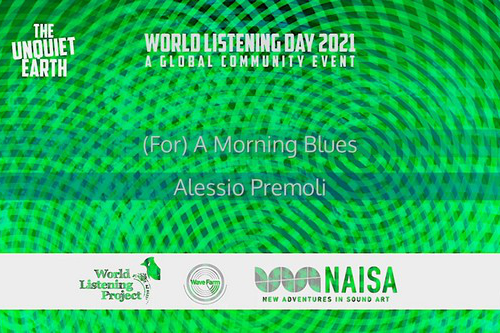
Radiosphere 2021
“Radiosphere 2021” is based on listening to shortwave in a suburb of Moscow, gathered by way of a streaming internet radio station.
July 2021
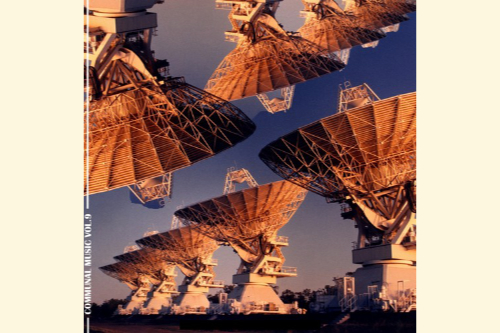
language fades in the dominion of the birds
My composition “language fades in the dominion of the birds” was included on Communal Music Vol. 9, released by AEMC (Amsterdam, Netherlands).
May 2021
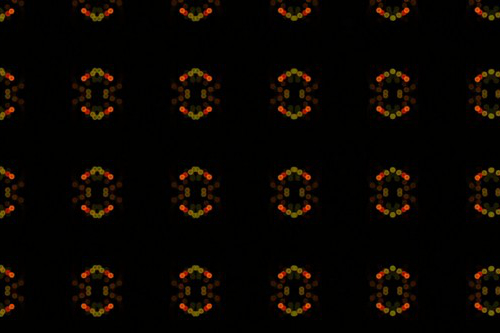
Emergence
“Emergence” was created for the recording artist Mai, and was used as the lead promotion for the album Polis. Created in Processing, the overlapping patterns were inspired by the work of Larry Cuba.
February 2021
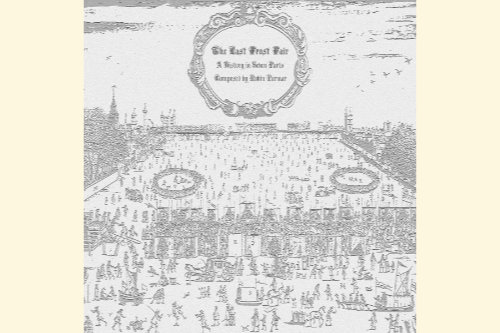
The Last Frost Fair
Seven tracks composed using material from a compact disc, skipping in place. Crystalline sounds in a beautiful array of ever-changing stasis. Released on Stolen Mirror.
December 2020
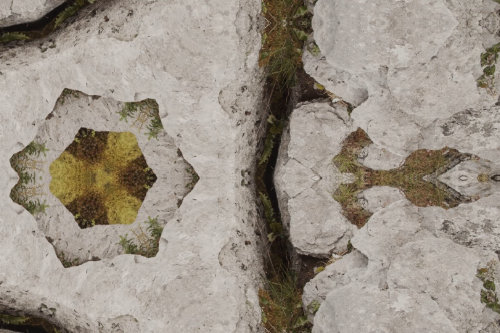
Karst
This video was created for the recording artist Mai, and was used as the lead promotion for the album Gaia. Filmed in The Burren, the video highlights the karst formations through digital transformations that reveal their inner fractal structure.
December 2020
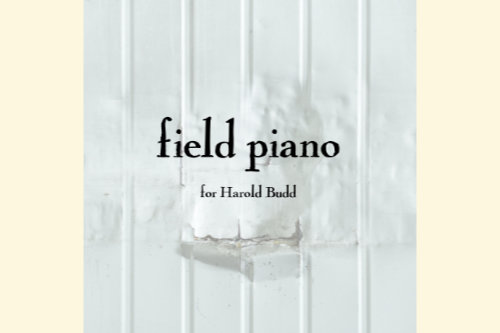
Field Piano (for Harold Budd)
Improvised in honour of Harold Budd, on the occasion of his passing.
December 2020
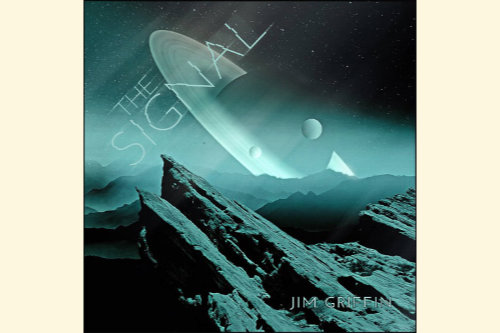
The Signal
The short piece “Alpha Canis Majoris {signal code: juniper}” was commissioned by recording artist Jim Griffin, eventually woven into the album The Signal.
November 2020
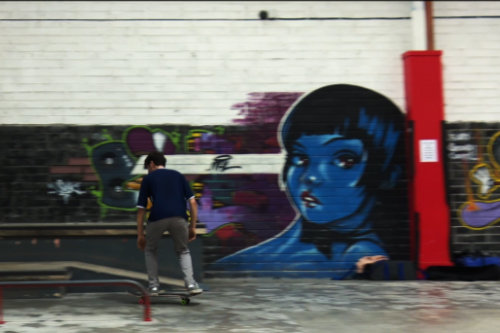
Digital Video Fundamentals (CS4053)
In this undergraduate module at DMARC, University of Limerick, students get hands-on experience with cameras and other equipment, while learning about media management, timeline editing, and other software tools. The emphasis is on group work and a structured process, from concept to delivery.
September 2020
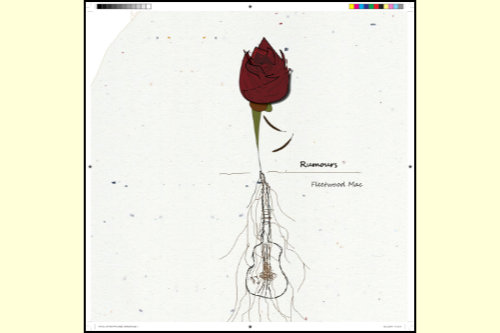
Graphic Design (CS4231)
In this first-year module at DMARC, University of Limerick, students are introduced to the elements and principles of graphic design in a historical perspective. Typography, colour theory, digital image formats, and other technical topics are discussed. Emphasis is on the iterative design process, from concept to delivery.
September 2020
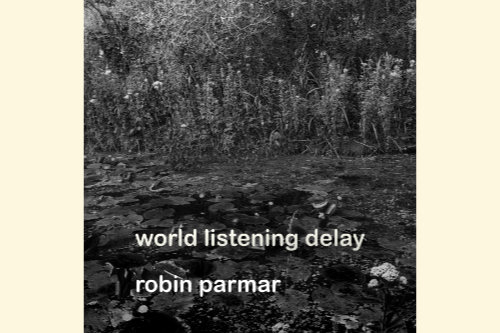
World Listening Delay
This is an improvisation made for uni.Sol_31, an ongoing experiment in group telepathy coordinated by Slavek Kwi. The original field recording was made on World Listening Day 2020 at a secret location on Lough Derg. Released on Stolen Mirror.
July 2020
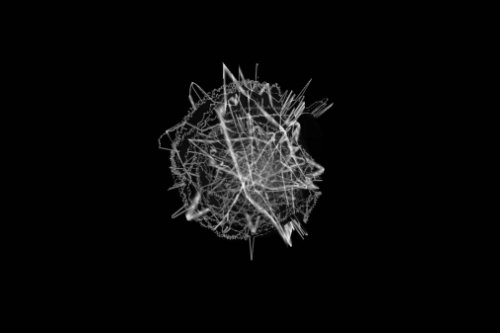
Indirect Collaborations
In 2020 Ed Devane invited artists to create new pieces from a small sample library he had created. My contribution was “Small Placebos”.
July 2020
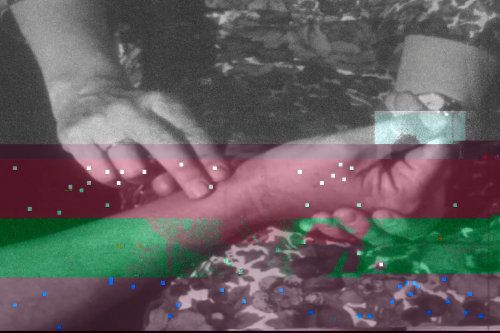
Handwringer
Made in isolation for this moment in time. Bitcrush audio effects + hex edit video files. Released under the name 7PRS.
March 2020

Universal Commercial Electric Telegraphic
The telegraph allowed instantaneous point-to-point communication over the wires. This album pays homage with sequencer patterns evolving over time within an environment of tape degradation, echoes, and interlocking rhythms.
March 2020
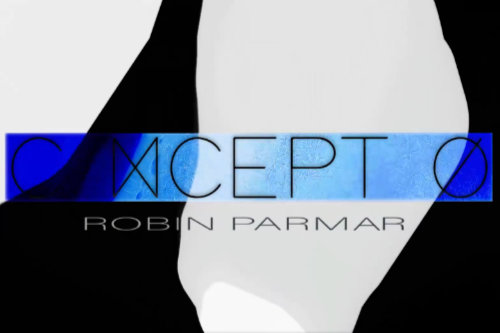
Concept Null Launch
My last performance, coming a few days before the first Irish pandemic lockdown. I performed Music For Glaciers, a slowly-evolving piece for two complex oscillators.
March 2020
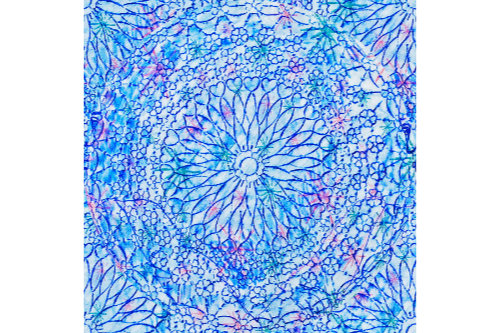
Black Moon - Waxing
The track “BLKmoon” was created under the influence of the Black Moon at 11:37 on 30 August. It was released under the name 7PRS for this compilation on Sofia Records.
February 2020
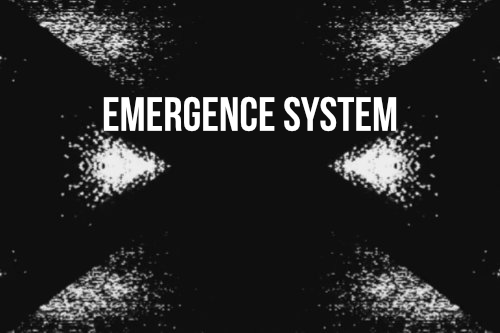
Emergence System
Ed Devane builds his own audio devices, from string instruments, to pickups, to custom-made amps. With unlikely suitcase of circuits he creates banging techno beats that sometimes collapse into chaos. Robin Parmar provides visuals using a live camera feeding Wolfscope, custom software based on analogue processes such as video feedback.
November 2019
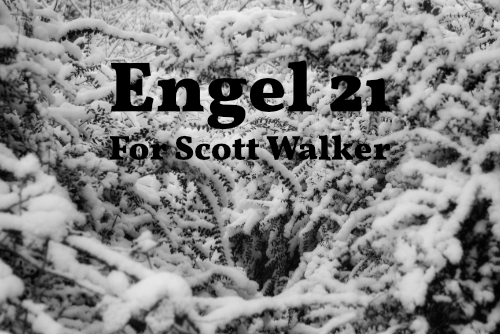
Angel
As part of the IndieCork Festival, a group of media artist converged on The Guesthouse in Shandon to perform the works of Scott Walker. I performed “Engel 21 (For Scott Walker)”.
October 2019
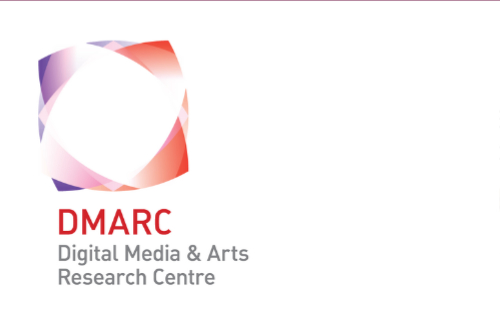
Lecturer in Video & Visual Communication
After several years of occasional teaching, I accepted a position at the University of Limerick. I am now the Lecturer in Video & Visual Communication at the Digital Media Arts Research Centre (DMARC).
September 2019
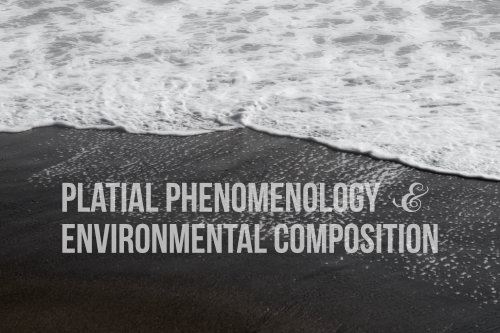
Platial Phenomenology and Environmental Composition
This dissertation investigates theories of place that were known to the Ancient Greeks, but which have been largely forgotten in our ocularcentric world. I propose that alternative phenomenological practices can be built from topos and choros, as illustrated by the sonic practices of Dallas Simpson and Robert Curgenven.
September 2019
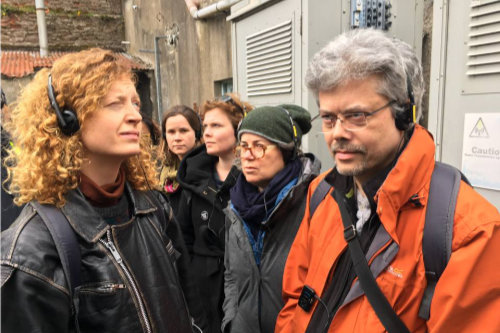
Living the Anthropocene: Rethinking Sound and Nature
We live in The Anthropocene, an epoch marked by human influence on species decline and climate change. As a field recordist, I wonder how historical approaches to nature have been complicit with these changes. At HearSay this topic was approached through two talks and a listening session, specifically designed for an audience of radio practitioners.
April 2019
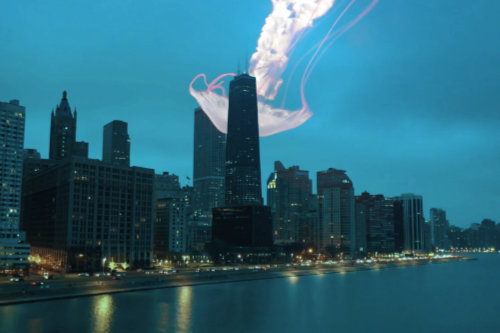
Advanced Video Production (CS4040)
In this module at DMARC, University of Limerick, students are introduced to motion graphics. Early animated films are used as models for the students’ own work in Adobe Premiere and After Effects. The outcomes are a fixed video integrated with sound and a live performance using Modul8 VJ software.
February 2019
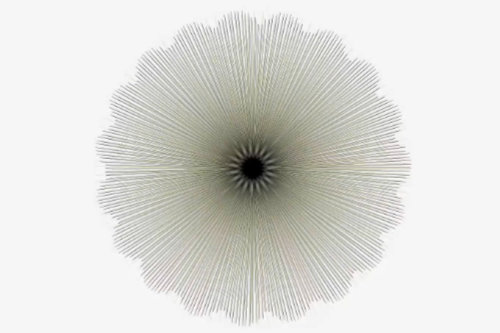
Visual Coding (CS4049)
In this fourth year module at DMARC, University of Limerick, students are introduced to the principles of algorithmic visuals, using the Processing language. A historical perspective is used to ground the work in the tradition of direct animation and visual music.
February 2019

Division by Zero {phalange}
Division by Zero is an ambient music project which has an integral video element. The section “{phalange}” was included by Kim Cascone in The Drone Cinema Film Festival, screened in Seattle, USA, and Leiden, Netherlands.
January 2019
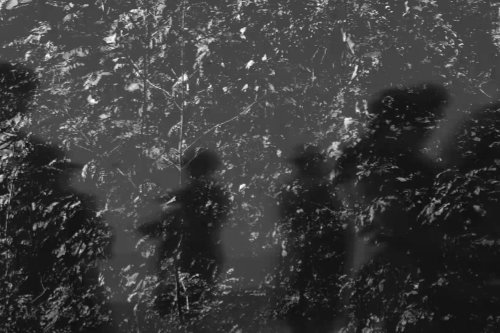
The Swerve
The invisible, the inaudible, the untouchable. That dance at the heart of nature we can never witness. This film premiered 10 November 2018 at Light Moves: Festival of Screendance in Limerick, Ireland.
November 2018
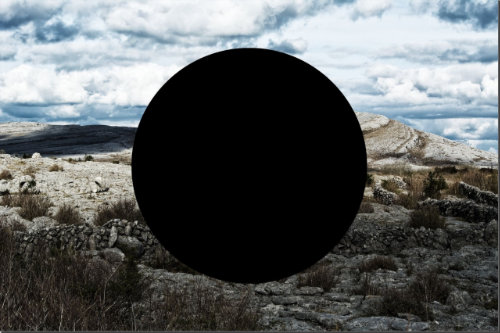
Sounding the Anthropocene @ WFAE
We live in the Anthropocene, a critical juncture in which Homo sapiens has become the dominant force on the planet. The concepts of nature that have been leveraged by our society have failed us. Now, at the very brink, we must interrogate our assumptions, to begin again, from the root.
October 2018
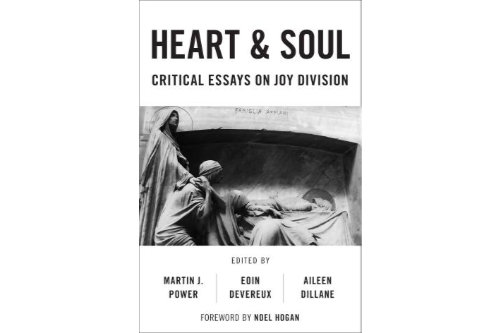
Joy Division in Space: The Aesthetics of Estrangement
I contributed this chapter to the book Heart and Soul: Critical Essays on Joy Division, edited by Martin J. Power, Eoin Devereux, Aileen Dillane, published by Rowman & Littlefield.
October 2018
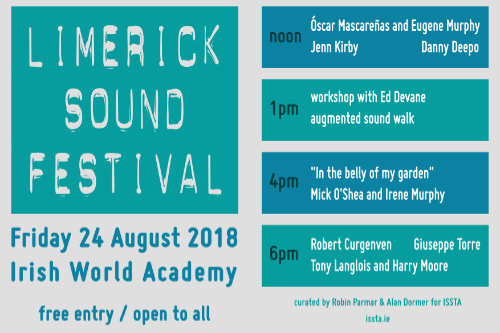
Limerick Sound Festival
With Alan Dormer, curated this day of musical performance, installations, and discussion. Hosted by the Irish World Academy of Music and Dance, University of Limerick. An ISSTA event.
August 2018
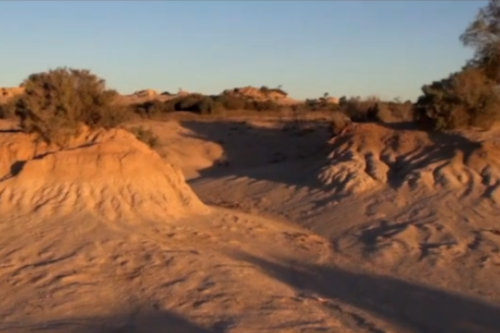
Robert Curgenven: Locate Yourself
This is a review of the art exhibition Locate Yourself, an anthology of works by Robert Curgenven, which was presented at CIT Wandesford Quay Gallery, Cork, Ireland in 2017.
August 2018
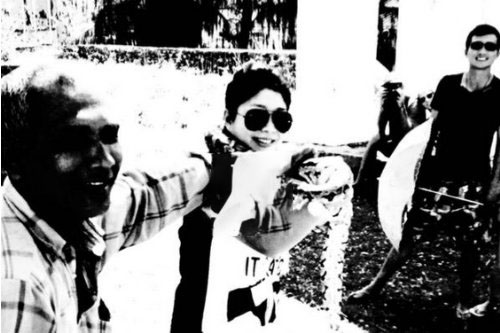
Sounds from Sri Lanka
Sounds from Sri Lanka is a project of Cities and Memory that asked composers to remix and reimagine location recordings by Stéphane Marin. Selected pieces were selected for a free album, but many more are also available.
May 2018
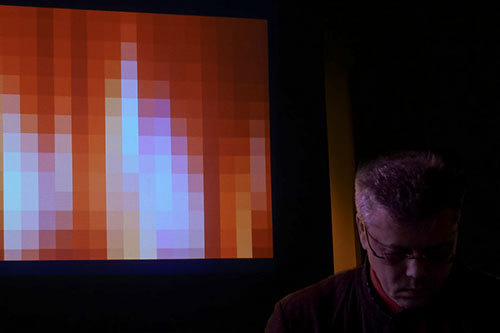
Division By Zero @ Algorave
A short release performance was a part of Algorave, at Pharmacia, Limerick, 13 March 2018.
March 2018
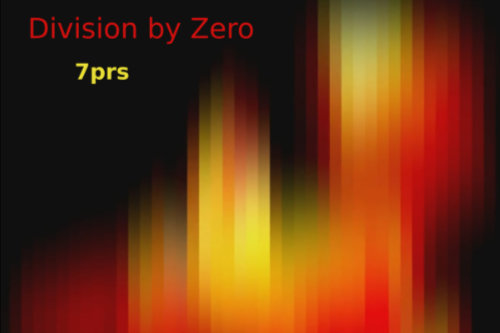
Division By Zero
Division By Zero is the debut release from 7PRS, the alter-ego of composer Robin Parmar. This album has been released by Kim Cascone’s famous label Silent Records, and is available on Bandcamp and worldwide through all digital channels.
March 2018
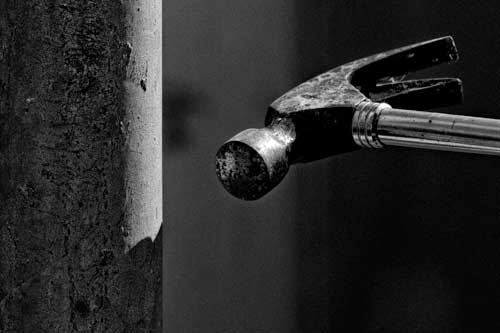
Perturbation
“Perturbation” is an electroacoustic composition that highlights the silence between sounds as much as the unexpected timbres of the chosen materials: crumpled paper, shells rubbed together, and a hammered metal pole.
February 2018

Algorithmic Composition
In this undergraduate module at DMARC, University of Limerick, students use Max 7 to create an algorithmic composition. Topics include stochastic distributions, chaos equations, finite state machines, cellular automata, and fractals. A mathematical approach to music permits students without a background in theory to nonetheless create aesthetically interesting work.
January 2018
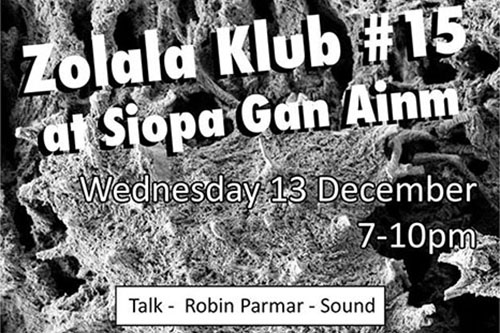
Sounding the Anthropocene @ Zolala
“Sounding the Anthropocene: Field Recording and Ideologies of Nature” is a talk that examines how field recording practice has been complicit with ideologies of nature that have led us to our current ecological crisis.
December 2017
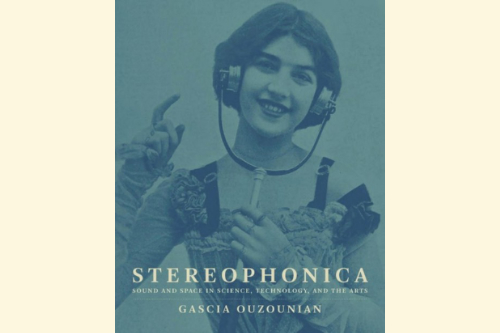
Stereophonica Review
This review of Gascia Ouzounian’s intriguing book Stereophonica: Sound and Space in Science, Technology, and the Arts was published in the journal Organised Sound.
December 2017
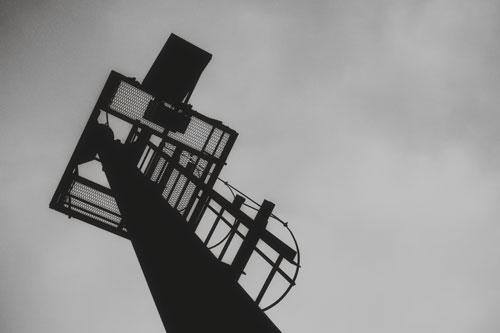
Radio Without Radio Waves: Utopian Proposals
What role does radio have in today’s complex world of podcasts, phone apps, and digital broadcasting? Is there still scope for those Utopian ideals that birthed radio in the first place? This talk will examine the history of radio by considering eight transmission technologies, from telegraph to webcast. From this foundation, “radio” will be defined in a novel way, without restriction to any particular technological regime. It will be demonstrated that radio in any form has an important role as an ephemeral and inclusive force, flourishing as “invisible voices in the wind, in thunder, in the dream” (R. Murray Schafer).
September 2017
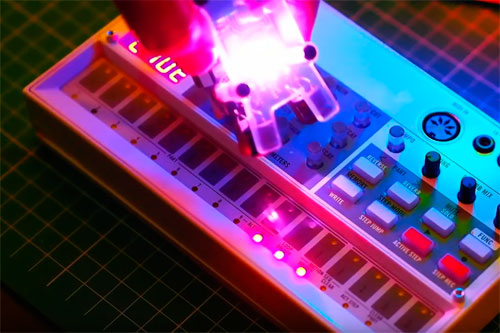
Improvisation on Korg Volca (4 Mika Vainio)
The Korg Volca is a line of small, inexpensive, battery-powered electronic instruments, each designed for a specific purpose. This improvisation is designed to test the limits of a single Volca, both in terms of sonic output and with respect to its minimal performance interface. It is an homage to Mika Vainio and his experiments with minimal techno.
September 2017
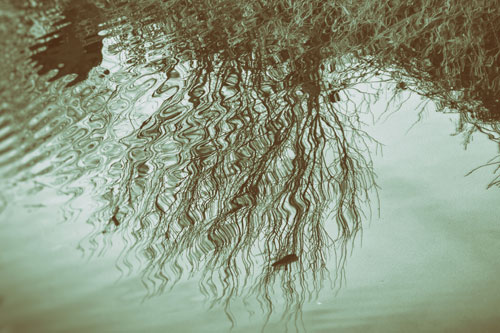
Atoms and Digital Audio: Epicurus Meets Mika Vainio
Though we commonly describe sound as a wave, a minority viewpoint holds that sound is more properly corpuscular. This concept can be traced back to the atomists, who held that all of nature could be construed as two elements: atom and void. Foremost among these thinkers is Epicurus, who proposed that an infinitesimal “swerve” in the otherwise regular movement of atoms is responsible for all interactions and hence all nature. This paper will illustrate the contemporary relevance of this theory, in light of corpuscular theories of sound, granular synthesis, and the minimal techno of Mika Vainio and Panasonic.
September 2017
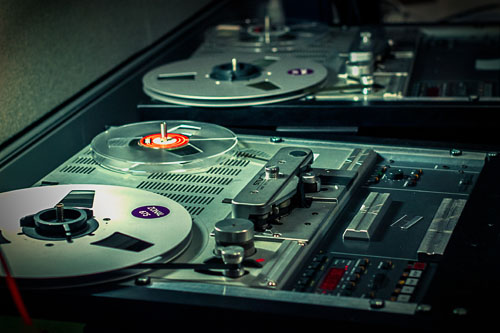
Digital Media Software and Systems 2
In his undergraduate module at DMARC, University of Limerick, students used Max 7 to implement various forms of sound synthesis, learning the history and digital audio concepts behind each practical technique. Coding style, interface development, and MIDI control are also covered.
September 2017
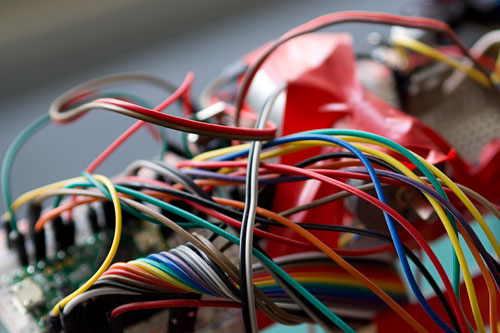
Realtime Audio and Video
Lecturer for this Masters-level module at the Digital Media Research Centre (DMARC), University of Limerick.
This module is part of the newly developed Masters in Art and Technology. Students implement real-time processing systems for audio, video, and other media, using Max 7. Topics include control systems (MIDI, OSC, CV, serial), chaos algorithms, stochastics, and sonification.
September 2017
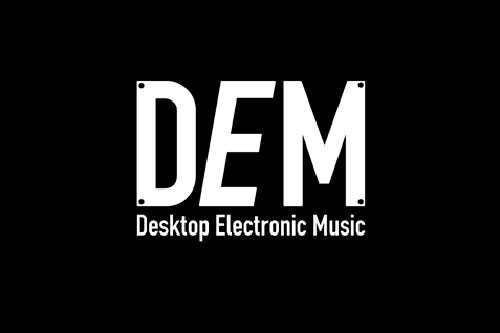
Desktop Electronic Music
This series of 12 articles covers interface design, proposals for mixer architectures, MIDI wiring diagrams, improvisation, and the music of Mika Vainio (Panasonic). What they have in common is the concept of Desktop Electronic Music (DEM).
August 2017
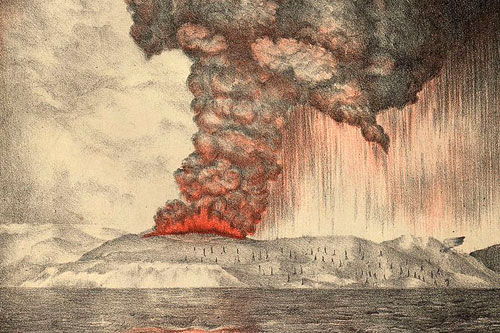
Sound Ideas
“Sound Ideas: The Surprising World of Sound and Listening” was a talk gaven at Trinity College, Dublin, in coordination with the Science Gallery’s Sound Check exhibition. This talk was aimed at a general audience. Topics included what sound actually is (acoustics), how we hear (psychoacoustics), and various myths of listening.
June 2017
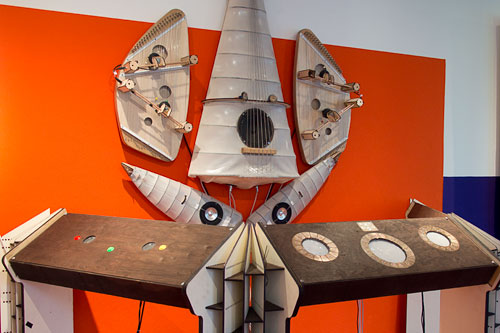
ClusterChord
ClusterChord is a musical instrument that allows multiple performers to trigger sounds through a tangible sequencer interface. The sounds are produced acoustically, using a variety of plucked and buzzing strings. This instrument was designed by Ed Devane for the exhibition Sound Check at the Science Gallery, Trinity, Dublin. I wrote the code for the embedded microprocessors.
June 2017
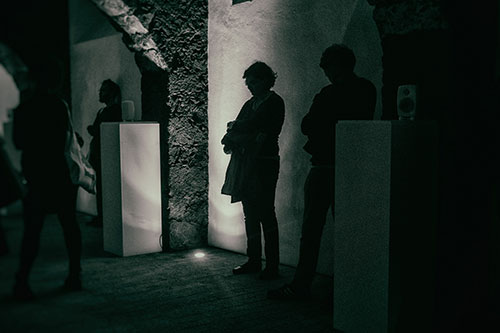
"In that place, the air was very different"
The sound installation creates imaginary places from field recordings I have compiled over several years. For each instantiation, I make new recordings from the environs as a personal response to place. As these are added to the available sound pool, the piece accumulates its own sonic memory of the places I have been.
April 2017
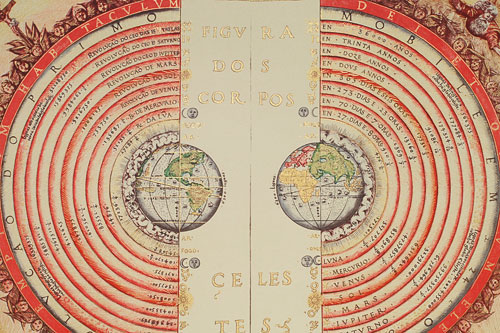
Geos, topos, choros: three models for thinking about place
The Ancient Greeks described place using three methods: geos, topos, and choros. Of these only Ptolemy’s geography, a geometric approach to algorithmic map generation, has survived to any extent. This paper describes the elided concepts, proposing them as integral to establishing a rich conceptual framework for critique of contemporary sonic practice.
April 2017
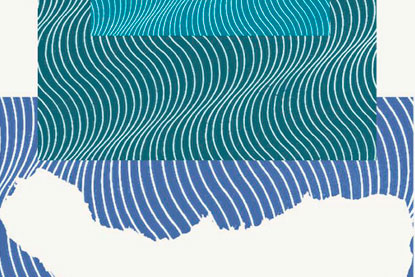
São Miguel Island residency
This residency on São Miguel Island, Azores, Portugal, ws part of Invisible Places 2017. My sounding of the island produced recordings, poetic texts, and lens-based work, as documented on the process blog Sounding Miguel.
See also the entry on the installation “In that place, the air was very different”.
March 2017
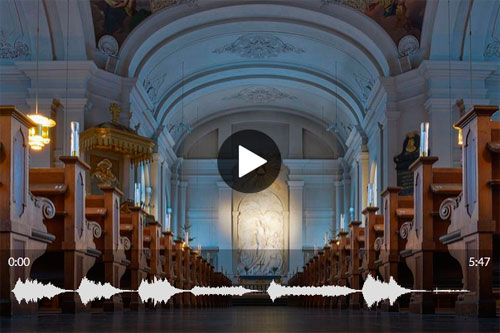
Before The Listening Begins
“Sacred Spaces” is the latest collaborative project from Cities and Memory. My contribution was created from Melissa Pons’ recording of a church congregation in Sweden, made in the moments before the organ processional. She writes: “I have been fascinated by what happens in a room where the audience is waiting for the music to start”. What exists in the space before listening?
February 2017
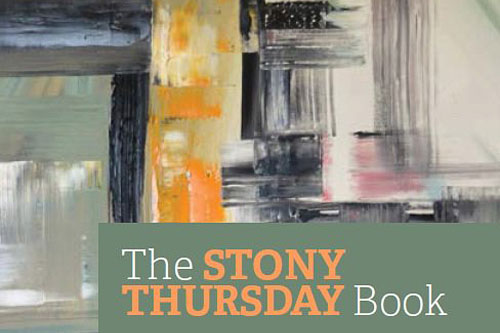
Revenge Fantasy
“Revenge Fantasy” will be published in the annual Stony Thursday Book, No. 15, edited by John Davies. I look forward to the launch at the Limerick City Library, which will be a reunion of sorts for many poets, local and otherwise.
January 2017
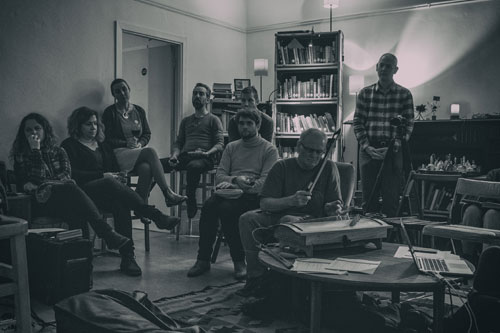
A Celebration of Pauline Oliveros
This performance commemorated the passing of Pauline Oliveros, whose work had touched many in Cork. Performers in the group improvisation included Danny Mc Carthy, Mick O’Shea, Harry Moore, Karen Power, John Godfrey, and myself.
December 2016
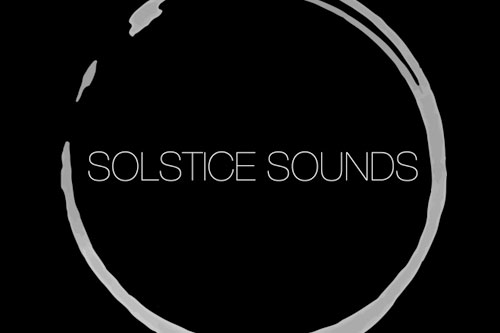
Siamese Twins
“Siamese Twins” is not just a poem but a sonic production that incorporates my electroacoustic music. I created this especially for Solstice Sounds Volume II, a compact disk of spoken word released by the local poetry colelctive Stanzas.
December 2016
![In that place, the air was very different [installation and dance]](img/install-in-that-place-derry-1-OMIT.jpg)
"In that place, the air was very different"
The sound installation creates imaginary places from field recordings I have compiled over several years. For each instantiation, I make new recordings from the environs as a personal response to place. As these are added to the available sound pool, the piece accumulates its own sonic “memory”.
The artists of Echo Echo Dance Theatre responded with a generous intervention.
November 2016
![From Here To Tranquility [release]](img/composition-division-by-zero-shadow-1-OMIT.jpg)
Division by Zero {shadow}
My track “Division by Zero {shadow}” has been released on From Here to Tranquility - Volume 7, a massive compilation from Silent Records, including almost three hours of music from 24 different artists.
September 2016
![A Brief History of Field Recording [conference paper]](img/paper-brief-history-1-OMIT.jpg)
A Brief History of Field Recording
Paper presented at ISSTA 2016 in Derry-Londonderry, Northern Ireland.
This paper describes early field recording practice in order to demonstrate the varying imperatives – aesthetic, documentary, commercial, educational – that drove its development. The works of Karl Reich, Ludwig Koch, and Albert Brand will be auditioned and contextualised.
September 2016
![On Creating Events [poetics]](img/poetics-on-creating-events-1-OMIT.jpg)
On Creating Events
“I am here to tell you about an event, but by being here you are already part of it. There is no point in me speaking except to create in this event, of this event, another event, the event of my speaking to you.”
This talk was given to open the exhibition “Coffee-time Postcards” by Alexis Clancy.
September 2016
![Trembling the Manifold [composition]](img/composition-trembling-the-manifold-1.jpg)
Trembling the Manifold
The Next Station is a sound map of the London Underground that “creates an alternative sound world based on the experience and memory of the iconic Tube.”
My contribution “Trembling the manifold” was created entirely from a field recording of Willesden Junction, London.
August 2016
![A Riba-Roja d'Ebre [performance]](img/perform-a-riba-roja-debre-1.jpg)
A Riba-Roja d'Ebre
A concert organised as part of the Terra Alta residency. Matt Green, Linda O Keeffe, and myself performed with several local sound artists. The location was an agrobotiga selling local, sustainable produce.
August 2016
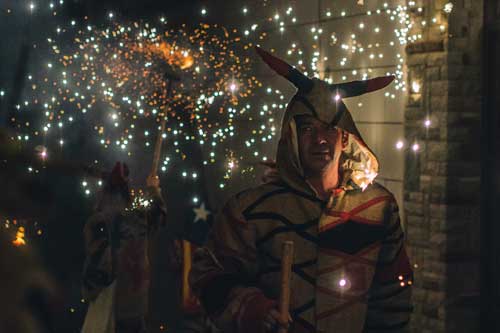
Terra Alta residency
This residency was curated by sound artist Linda O Keeffe and composer Tony Doyle. The location was the small village of La Fatarella in the northern Terra Alta region of Catalonia. Many pleasant hours were spent recording wind turbines, local festivals, and the cicada of the fields.
August 2016
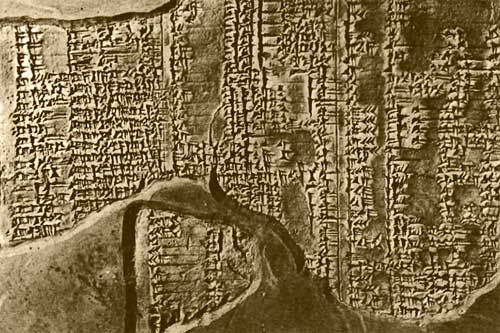
Hurrian Hymn No. 6
“Hurrian Hymn No. 6” is the oldest known piece of music, a cult hymn from 3400 years ago. The cuneiform signs in the Hurrian language were discovered in the ancient Syrian city of Ugarit. I started this arrangement a few years ago, but have completed and released it now in dedication to the people of Syria.
July 2016
![Dust On My Hands [performance]: material](img/perform-dust-on-my-hands-1.jpg)
Dust on my Hands
This four channel composition premiered in Dublin as part of Listen/compose/perform, curated by Karen Power.
The original tracks were created by sounding the former Royal Cork Yacht Club of Cobh, Ireland, using materials such as beach stones, upright piano, and rusted iron ornaments.
June 2016
![Three Foghorns [performance]](img/install-three-foghorns-1.jpg)
Three Foghorns
This composition was created by layering cruise ship foghorns, diffusing them from different locations about the performance space. Including, notably, from inside a locked sea chest. It premiered on the final night (25 May) of my residency at the Sirius Arts Centre.
May 2016
![Sounding Cobh [residency]](img/residency-sounding-cobh-1.jpg)
Sounding Cobh
I am intrigued by the role that sound plays in our perception of environments, particularly in how we constitute place. My model of investigation is built around the sounding, a concept which transforms sound from noun to verb, in order to emphasise the active process by which we create a place anew, each time it is encountered.
This residency at the Sirius Arts Centre concluded with a public performance and exhibition on 25 May.
May 2016
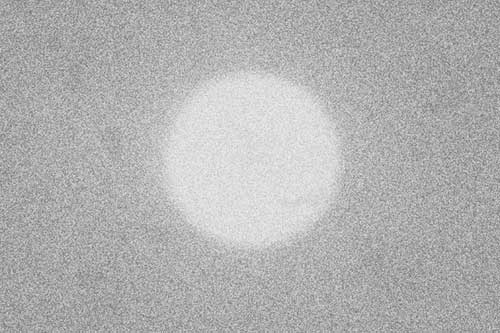
Requiem David Bowie (Some Are)
This piece was written to commemorate the death of David Bowie. It was premiered on Nova, Lyric FM, RTÉ and used in the play Yoga for Beginners by Adam Wyeth.
March 2016
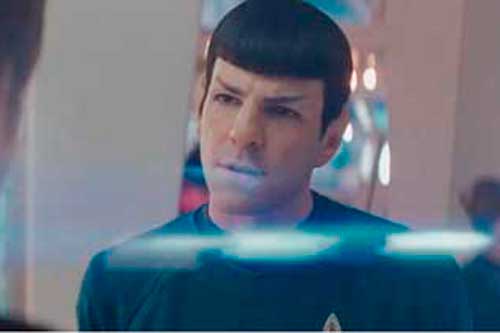
Science-Fiction and Hypermodernism
This paper was presented at the inaugural Hypermodernism conference in Paris.
Science-fiction was the original hypermodern, predicated on faith in reason and the scientific method, fixated on our ability to understand and control our environment, obsessed with novelty. Following the New Wave experiments of the 1960s, science-fiction became increasingly mediated. Our contemporary touch panels, ubiquitous computation devices, and fibre optic communications precipitated out of this space of imagination. Now that it is everywhere, science fiction has lost its original function.
March 2016
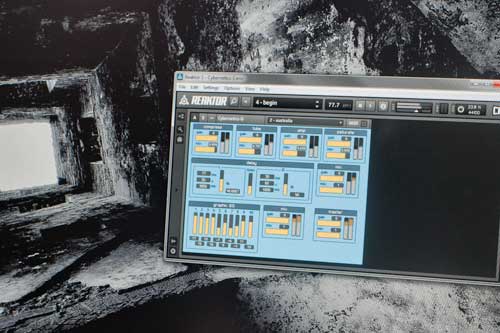
Creating an Autopoietic Improvisation Environment Using Modular Synthesis
This paper was published in the Canadian journal eContact!, a special edition titled Analogue and Modular Synthesis: Resurgence and Evolution, edited by Richard Scott.
The “no source mixing desk” is a sound mixer with outputs wired to inputs, so that the self-noise of the circuitry is the only sonic material. The No Input Software Environment (NISE) is my software implementation of such a system, designed to encourage musical experimentation.
March 2016
![Stolen Mirror launch [performance]: Robin Parmar](img/perform-stolen-mirror-launch-1.jpg)
Stolen Mirror album launch
This performance included artists from my label. Steve McCourt was direct from Shanghai and Fergus Kelly from Dublin. The three of us played together for a final improvisation… for the first time!
February 2016
![Performance Technology 1 [course module]](img/teaching-performance-technology-2016-1.jpg)
Performance Technology 1
Lecturer for this second year module at the Digital Media Research Centre (DMARC), University of Limerick.
Students learn to organize and execute a successful artistic collaboration, program real-time and distributed software for audio and video, implement real-time digital signal processing algorithms and environments, and produce work reflecting current practices in real-time video and audio production.
January 2016
![Physical Computing: Musical Interfaces [course module]](img/teaching-physical-computing-2016-1.jpg)
Physical Computing: Musical Interfaces
Lecturer for this Masters module at the Digital Media Research Centre (DMARC), University of Limerick.
Students use the the Arduino microprocessor environment to create their own Digital Musical Instrument (DMI), with which they perform in concert. Hence they must integrate knowledge of design and human factors, physical circuitry and computer code, aesthetics and collaboration.
January 2016
![The Music Videos of Angela Conway [conference paper]](img/paper-angela-conway-1-OMIT.jpg)
The Music Videos of Angela Conway
Paper given at the Light Moves symposium in Limerick, Ireland.
This seminar introduces the work of Angela Conway, highlighting her relationship with Michael Clark’s transgressive dance company and the equally iconoclastic rock group Wire. Two rare videos, screened in full, demonstrate the important place of the music video form in the context of screendance
November 2015
![Transits and Transmissions: Joy Division in Space [conference paper]](img/paper-transits-and-transmissions-1-OMIT.jpg)
Transits and Transmissions: Joy Division in Space
Paper given at Atrocity Exhibition, the first conference dedicated to the work of Joy Division.
This paper examines the lyrics of Ian Curtis, Peter Saville’s sleeve designs, and Martin Hannett’s studio production, in the context of Joy Division’s music. At first appearing disparate, these elements together emphasise containment, frames, distance, and absence. They provide spaces, both literal and figurative, in which music and listener can meet.
November 2015
![Acoustics, Psychoacoustics, and Modalities of Listening [course module]](img/teaching-acoustics-psychoacoustics-2015-1.jpg)
Acoustics, Psychoacoustics, and Modalities of Listening
For three years I was lecturer for this Masters module at the Digital Media Research Centre (DMARC), University of Limerick.
This module begins with the physics of sound and the biology of the ear, before differentiating between the objective world of acoustics and the phenomenological world of psychoacoustics. In the third section we discuss contemporary issues in sound studies: listening, acoustic ecology, soundscape studies, noise.
September 2015
![Performance Technology 2 [course module]](img/teaching-performance-technology-2015-1.jpg)
Performance Technology 2
Lecturer for this fourth year module at the Digital Media Research Centre (DMARC), University of Limerick.
Students learn to organize and execute a successful artistic collaboration, program real-time and distributed software, implement real-time DSP algorithms, and produce work reflecting current practices in real-time video and audio production.
September 2015
![Digital Angst and the Phenomenology of Discontinuity [conference paper]](img/paper-digital-angst-1.jpg)
Digital Angst and the Phenomenology of Discontinuity
Paper given at ISSTC 2015 in Limerick, Ireland.
Many listeners remain fundamentally uneasy with digital audio, considering that it is “cold” and robs music of “life”. This paper examines this angst through Alberti’s perspective theory, Zeno’s paradoxes, Baudrillard’s philosophy of the virtual, and granular synthesis. It proposes a corpuscular phenomenology of sound that reframes discontinuities not as absences, but as generative sites, full of possibility.
August 2015
![Digital Anxiety Dispelled: Granular Synthesis and the Paradox of Discontinuity [book chapter]](img/paper-digital-anxiety-1-OMIT.jpg)
Digital Anxiety Dispelled: Granular Synthesis and the Paradox of Discontinuity
This is a chapter in the book Jean Baudrillard: Fest für einen Toten, subsequently revised for presentation in English.
July 2015
![Sounding Cork [residency]](img/residency-sounding-cork-1.jpg)
Sounding Cork
I am intrigued by the role that sound plays in our perception of environments, particularly in how we constitute place. This residency at The Guesthouse manifest itself in field recordings, photography, and texts, presented via a process blog and a performance/exhibition.
May 2015
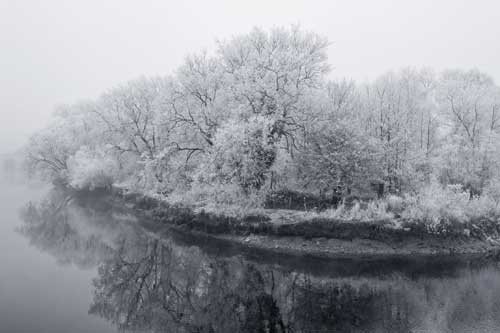
The Garden of Adumbrations
“The Garden of Adumbrations” is an electroacoustic composition made entirely of local field recordings, some unaltered, some subject to musique concrète techniques. The result is an anecdotal experience that places the listener in an unfolding sonic ecosystem. The composition represents a world of connections, shadows, and challenges.
March 2015
![Assisted Improvisation on the People's Park Monochord [performance]](img/perform-park-monochord-1-OMIT.jpg)
Assisted Improvisation on the People's Park Monochord
Improvisation on custom instruments built by Ed Devane for City of Culture, performed in the kiosk at People’s Park, Limerick.
March 2015
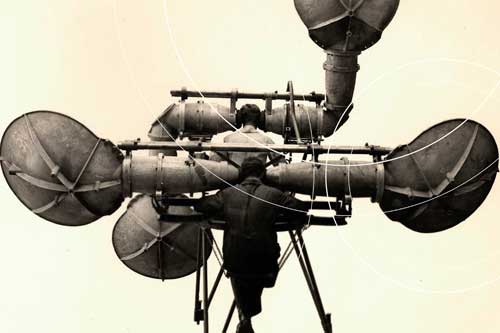
Foundsoundscape
Foundsoundscape was an online “radio” project curated by Janek Schaefer. He continuously mixed recordings of one thousand locations as captured by one hundred different recordists. I contributed three field recordings.
March 2015
![The Absence of Baudrillard [performance]](img/release-absence-baudrillard-1.jpg)
The Absence of Baudrillard
This improvisation was first performed in a bookshop in Mainz, Germany, to commemorate the passing of French philosopher Jean Baudrillard. Seven years later, this album reworks the source material.
March 2015
![Digital Instrument Fundamentals [course module]: Bach's score](img/teaching-digital-instrument-2015-1.jpg)
Digital Instrument Fundamentals
This module was for the undergraduate students in Music, Media and Performance Technology at the Digital Media Research Centre (DMARC), University of Limerick. It covered the essentials of music theory and notation. The engraving software Sibelius was used to score an original composition.
January 2015
![Hearing as Science-Fiction [talk]](img/paper-hearing-as-sf-1.jpg)
Hearing as Science-Fiction
Talk given at the Hearsay Audio Arts Festival, Kilfinane, Co. Limerick.
The mysterious and wonderful complexity of our acoustic sense is explored by considering psychoacoustic effects. Several radical propositions are made. The ear is itself a digital apparatus. Hearing is acoustic time-travel, an impossible activity that we nonetheless take for granted.
November 2014
![LUD Literatura website [archival]](img/poetics-moc-navade-1.jpg)
Moc navade
Though I had previously published simultaneously in Slovenian and English, “Moc navade (na prestonski obvoznici)” is my first poem to be published only in Slovenian.
November 2014
![Boundary Conditions [screendance]](img/video-boundary-conditions-1.jpg)
Boundary Conditions
“Boundary Conditions” is a screendance created with Angie Smalis. Designed as an experiment in framing and depth of field, it explores how a body might negotiate these optical constraints. A specially constructed rig allows two cameras to shoot at different focal planes simultaneously.
November 2014

Spectator, Performer, Magician: Orders of Interactivity
Paper given at Retune 2014: Inside the Mirror at Arena Glashaus, Berlin.
This paper considers the mirror as an object of engagement and estrangement. Three orders of interactivity are proposed: the Spectator, considered by Marcel Duchamp to be an active contributor to an artwork; the Performer, as demonstrated in Kaprow’s “Happenings”; and the Magician, elaborated through examination of Alberti’s assertion that Narcissus invented painting.
September 2014
![Afterimage [filmpoem]](img/video-afterimage-1.jpg)
Afterimage
This film explores disjunctions between our visual and aural apprehension of our environment. What does it mean to be in a place? How can we encounter nature through a lens?
July 2014
![Caged Birds (Augmentation) [composition]](img/composition-caged-birds-augmentation-1.jpg)
Caged Birds (Augmentation)
Composed for 100x John: A Global Salute to John Cage in Sound and Image, premiering at the White Box Gallery, New York City in 2011. This piece has since been played in Ireland, UK, and Portugal.
July 2014
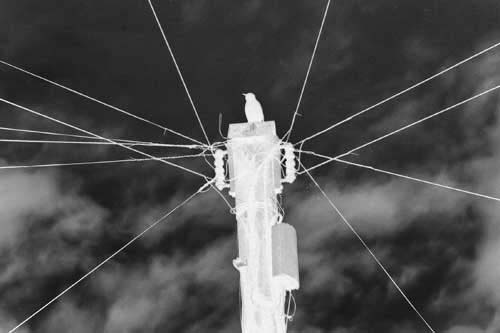
"Caged Birds" as Field Recoding
Artist talk given at Invisible Places - Sounding Cities, the symposium of the World Forum of Acoustic Ecology, in Viseu, Portugal.
I explain some of the ideas behind the composition “Caged Birds (Augmentation)”, a field recording of a dawn chorus in the para-urban environs in which I live. The subtle electroacoustic processing evident in this piece parallels transformations in birdsong that urban development has engendered.
July 2014
![Methods of Hypnosis [screendance]](img/video-methods-of-hypnosis-1-OMIT.jpg)
Methods of Hypnosis
A woman is wrapped in a blanket by four strangers. Couples with broken arms partner on a dance floor. An unconscious young man is disengaged from a steering wheel. “Methods of Hypnosis” reveals strange choreographies hidden in public domain footage.
July 2014
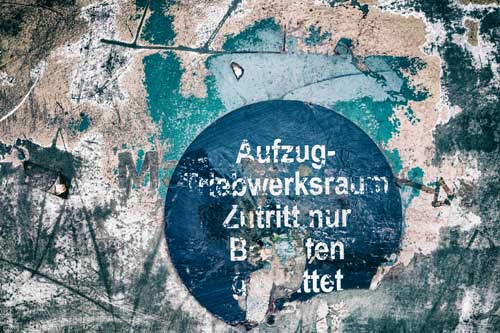
Bastion
“Bastion” is a series of electroacoustic compositions made from field recordings processed into extreme timbres. These were created for the “Wall” installation at Sonic Arts Waterford 2014, in partnership with Waterford Festival of Architecture.
July 2014
![Sounding Place: Towards a Practice of Field Recoding [conference paper]](img/paper-sounding-place-1.jpg)
Sounding Place: Towards a Practice of Field Recoding
Paper given at Invisible Places - Sounding Cities, the symposium of the World Forum of Acoustic Ecology, in Viseu, Portugal.
This paper applies conceptions of “place” derived from the disciplines of human geography, ethnomusicology, and phenomenology to the practice of field recording. Place is a product of an ongoing reflexive and discursive process by which we encode meaning in the milieu.
July 2014
![An Evening with Pauline Oliveros [poster]](img/perform-an-evening-with-pauline-1-OMIT.jpg)
An Evening with Pauline Oliveros
Pauline Oliveros is an important musician, improviser, and thinker, known for her practice of “deep listening”. She was in Cork to receive an honourary degree. As celebration, this group improvisation was organised at The Guesthouse. I was honoured to take part, alongside The Quiet Club, Karen Power, Harry Moore, John Godfrey, and other friends.
June 2014
![Under the Streets of Limerick [composition]](img/composition-under-the-streets-of-limerick-1-OMIT.jpg)
Under the Streets of Limerick
This piece was recorded and composed in a marathon session, entirely on World Listening Day 2012.
May 2014
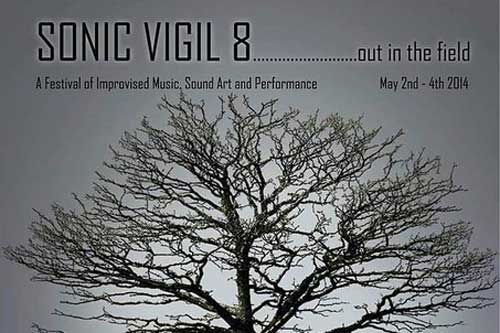
Sonic Vigil 8
Sonic Vigil is a festival of improvised music, sound art, and video that takes place every year in Cork. I participated in the six-hour group improvisation with many wonderful folk including Áine O’Dwyer, Paul Hegarty, Danny Mc Carthy, Mick O’Shea, and Vicky Langan.
May 2014
![The Sono Prototype and Alberti's Window [conference paper]](img/paper-sono-prototype-1-OMIT.jpg)
The Sono Prototype and Alberti's Window
Paper presented at Urban Soundscapes and Critical Citizenship, University of Limerick, Ireland.
The Sono is a proposed window-mounted device that blocks unwanted sounds from the outside world. This paper analyses the history of “the window” as emblematic of visual hegemony, demonstrating how the non-relational, fixed-perspective approach to our senses embedded in the Sono denies our integrated, haptic sensorium.
March 2014
![...between... [album cover detail]](img/release-between-1-OMIT.jpg)
...between...
This album was created in collaboration with David Colohan. He provided several field recordings and small musical excerpts, which I combined with my own selections to create imaginary landscapes. It’s released on Gruenrekorder and available as a download.
February 2014
![Digital Media Software and Systems 4 [course module]](img/teaching-digital-media-2014-1.jpg)
Digital Media Software and Systems 4
I lectured on this undergraduate module at the Digital Media Research Centre (DMARC), University of Limerick.
Students use Max/MSP to implement compositional systems, using a variety of algorithmic techniques. The practicalities of packaging applications, developing interfaces, and performance systems was emphasised.
January 2014
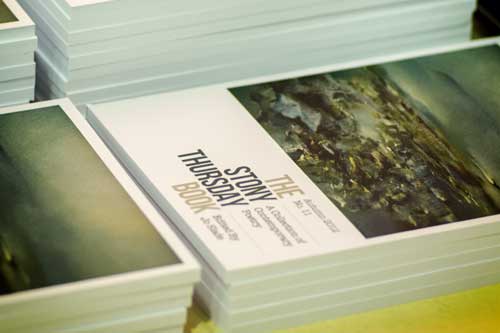
Tinnitus
My poem “Tinnitus” was published in the annual Limerick city poetry anthology The Stony Thursday Book. Paddy Bushe was the graceful editor.
October 2013
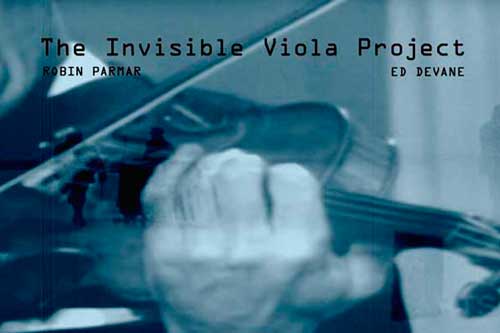
The Invisible Viola Project
The Invisible Viola Project was my experiment in anti-virtuosity, conducted by approaching an instrument I had not played in three decades. The performances included a collaboration with Ed Devane and a solo venture with video backing.
January 2013
![Making Noise and Reading Noise [book review]](img/paper-making-noise-1-OMIT.jpg)
Making Noise and Reading Noise
Review of Making Noise by Hillel Schwartz in the special “Noise” issue of Interference: A Journal of Audio Culture.
This large volume convinces that noise has always been a hot topic, from the very birth of the universe, through the gestation of human culture, right on down the line to the present. But what Schwartz omits is as telling as what he includes.
September 2013
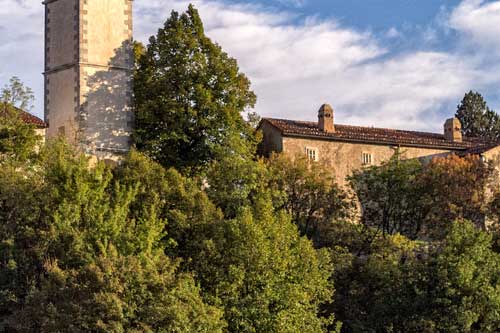
Golden Boat Poetry Translation Workshop
The 11th annual Golden Boat Poetry Translation Workshop saw poets from several countries (Finland, Slovakia, Poland, Croatia, England) meeting in the beautiful karst region of Slovenia. After a week of mutual translation work, a reading was held at Trubar Literature House in Ljubljana.
September 2013
![Abime [filmpoem]](img/video-abime-1.jpg)
Abîme
This filmpoem is a response to the environs of Škocjan, Slovenia. It was read in a pitch black cemetery after midnight, by the light of my phone.
September 2013
![Radio Before and After Radio Waves [conference paper]](img/paper-radio-waves-1.jpg)
Radio Before and After Radio Waves
Paper given at ISSTC 2013, the annual convocation of the Irish Sound, Science and Technology Association at the Dún Laoghaire Institute of Art and Design, Ireland.
Radio was born in a brilliant burst of activity by amateur technicians, radiophonic artists, and Utopian thinkers (Khlebnikov, Weil, Marinetti, Arnheim), before being colonised as valuable property by private companies or as sovereign territory by state authorities. But where has radio gone in today’s digital world? This paper provides a particular definition of radio as both spectral and ubiquitous, allowing us to plot a through line from past to future forms.
August 2013

Bicameral Dash
“Bicameral Dash” combines broken beats, viola played frantically in the dark, and sounds rolling in from some distant shore. This track is available on For Tom Carter, a Deserted Village benefit compilation.
August 2013
![Flame and Being [screendance]](img/video-flame-and-being-1.jpg)
Flame and Being
This filmpoem was created with footage spontaneously shot and assembled into a montage. It documents phantasmagoric impressions of my neighbourhood, the parish of St. Mary’s in Limerick.
July 2013
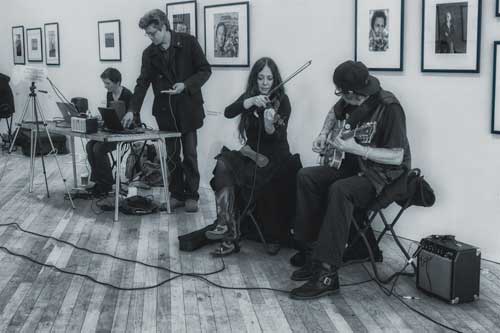
Sonic Vigil 6 launch
For this group improvisation I played alongside special guests Alexander Hacke (Einstürzende Neubauten, Crime and the City Solution) and Danielle de Picciotto at the Lewis Glucksman Gallery. The eveny launched the album documenting Sonic Vigil 6. One performance begets another.
May 2013
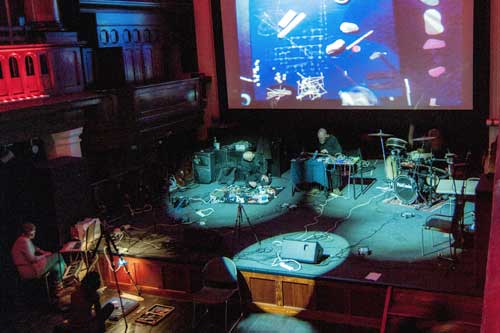
Two Observations
“Two Observations” was a solo piece for electronics and field recordings that marks one of my first public engagements with video. This was performed at the annual Sonic Vigil in 2011.
May 2013
![sixMILLIONsoundsPERsecond [seminar]](img/teaching-sixMILLIONsoundsPERsecond-1.jpg)
sixMILLIONsoundsPERsecond
The goal of this workshop was to encourage new ways of listening and to inspire wonder in the variety of sounds around us. To this end I played everything from beetles eating the interior of a tree to pure pink noise.
February 2013
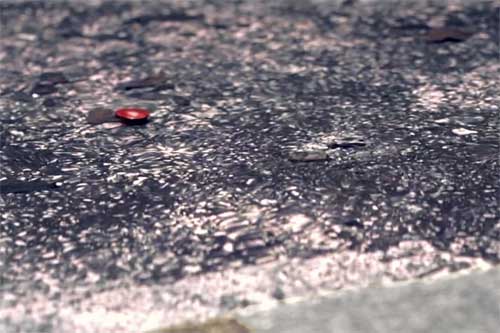
Fragments from an Improvisation for Abandoned Parking Garage
This performance was part fo a group improvisation in an abandoned underground parking garage in Galway. It commemorates the release of a compilation album on Declan Kelly’s Abandon Reason label.
January 2013
![No Labels No Music 4 [cover detail]](img/composition-oxygen-debt-1-OMIT.jpg)
Oxygen Debt
The anthology “No Labels No Music” is a project of Portuguese netlabel Editora Do Porto. The challenge is to create an original composition from an archive of field recordings. Participants are encouraged to chop, mix, and mutilate.
January 2013
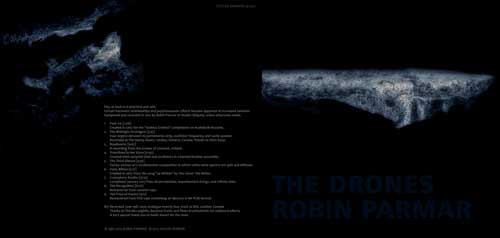
The Drones
Six years in the making, this album explores the contemporary drone through many methods and in various forms. Tracks vary from field recordings (“Roadworks”) to compositions for viola and oscillator (“Transfixed In Her Stare”). Percussion, electric guitar, organ, and bullroarer all play their part.
January 2013

"The Garden of Adumbrations": Reimagining Environmental Composition
Paper published in the journal Organised Sound.
R. Murray Schafer’s soundscape, predicated on a schizophonic engagement with sound, and Pierre Schaeffer’s musique concrète, based on an acousmatic relationship, have been the dominant approaches for those composing with environmental sounds. This paper critiques the ideologies behind these systems, instead suggesting an approach that uses Deleuze and Guattari’s rhizome as a generative metaphor.
December 2012
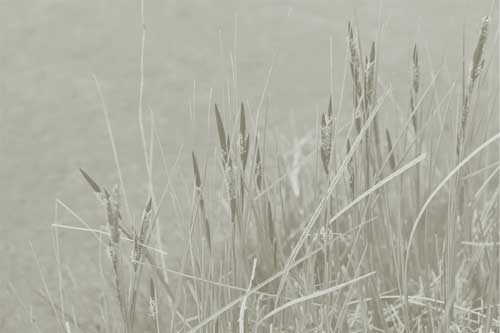
"Agentia" (for six musicians and tape)
“Agentia” was commissioned by the Quiet Music Ensemble. The piece presents musicians with a series of field recordings that document various natural and built environments. Their task is to improvise within this structure, adopting strategies common to agents within an ecosystem: signalling, camouflage, mimicry, adaptation, and augmentation.
November 2012
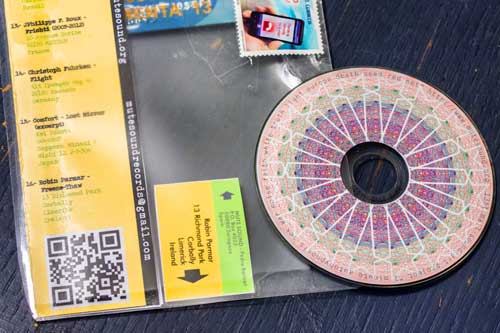
Freeze-Thaw
This short field recording was included on an idiosyncratic collection of sixteen similarly brief pieces, entitled 1 Minute Autohypnosis Sex War Noise Faith White Truth Light Europe Death Seed Red Net. This CD came in a transparent sleeve, adorned with mailing addresses and a bonus credit card with which can use to purchase karma, or perhaps faith, or maybe noise.
November 2012
![Sound and Architecture [seminar]](img/teaching-sound-and-architecture-1.jpg)
Sound and Architecture
This seminar for the architecture students at SAUL involved myself, Softday, and Donoghue Corbett Architects. We talked about various issues arising from our practice, in order to emphasise the importance of listening and acoustics in architectural design.
October 2012
Siren
Sometimes I enjoy the challenge of tackling a cliché subject, since you have to work extra hard to make it your own. “Siren” is one of those poems. It was published in The Stony Thursday Book No. 11 (ed. John Liddy).
October 2012
![Stony Thursday No. 12 [cover detail]](img/poetics-siren-1-OMIT.jpg)
Siren
Sometimes I enjoy the challenge of tackling a cliché subject, since you have to work extra hard to make it your own. “Siren” is one of those poems. It was published in The Stony Thursday Book No. 11 (ed. John Liddy).
October 2012
![After Keem [composition]](img/composition-after-keem-1.jpg)
After Keem
This sixty second recording is based on a field recording of the beach as pictured in the photo. The track was selected for inclusion on the 60x60 Canada Mix and subsequently was diffused in Vancouver.
August 2012
![Spinward and Falling [composition]](img/composition-spinward-and-falling-1-OMIT.jpg)
Spinward and Falling
This sixty second composition was selected for the 60x60 Europe Mix and also chosen for airplay on WGDR-WGDH as part of the 60x60 Radio Request Extravaganza.
August 2012
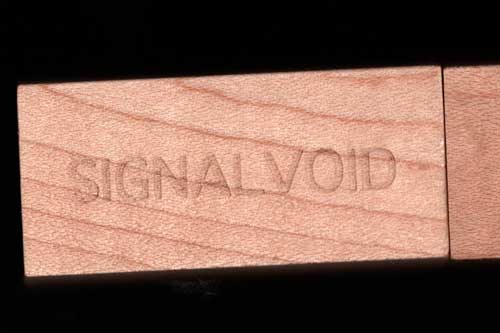
Picabia's Hammer
“Picabia’s Hammer”, “Propagating The Catastrophe”, and “The Nightingale Blockade” are three pieces of one minute duration, released alongside an incredible 260 others, on the compilation SIGNALVOID, described as “a creature with scaly features that resembles something familiar, perhaps of reptilian descent, but is ultimately not of this world”.
August 2012
![Becoming noise: unwanted sounds from Helmholtz To Hegarty [conference paper]](img/paper-becoming-noise-1.jpg)
Becoming Noise: Unwanted Sounds From Helmholtz To Hegarty
Delivered at ISSTC 2012, the annual convocation of the Irish Sound, Science and Technology Association (Cork, Ireland).
This paper presents over a dozen readings of noise, referencing Attali, Cage, Cascone, Derrida, Hegarty, Helmholtz, Kahn, Schafer, Schwarz, and Virilio. This surplus of definitions will be used as justification for reconsidering noise, not as a noun, but as verb. Noise is process, a “coming into being”, a generative axis without which no sound could exist.
August 2012
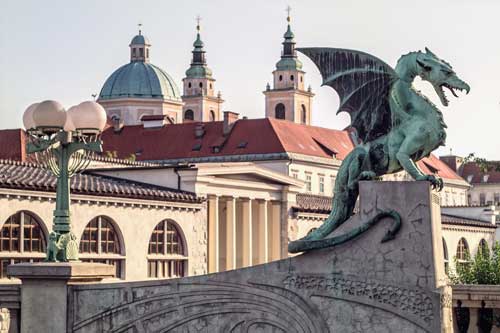
Mlade Rime Poetry Festival
I was a special guest poet for two consecutive nights at the Mladé Rime Poetry Festival in Ljubljana. This fantastic mix of live music, performance art, and literature suits me perfectly!
June 2012
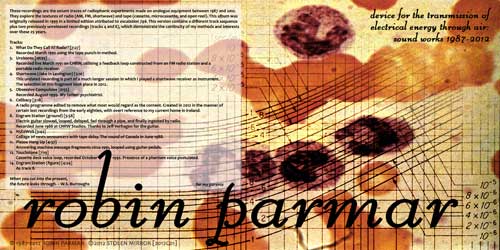
Device for the Transmission of Electrical Energy Through Air
These recordings are the extant traces of radiophonic experiments made on analogue equipment between 1987 and 2012. They represent the mediums of radio (AM, FM, shortwave) and tape (cassette, microcassette, cart, and open reel) in relationship to the somatic and the linguistic.
June 2012
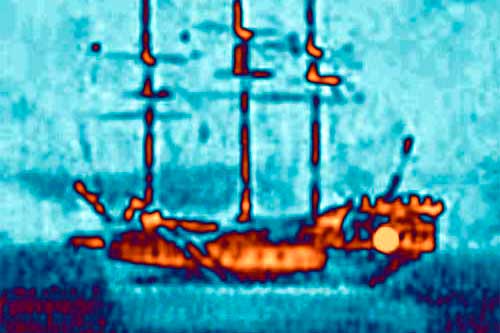
Marmaros
This hour-long ambient piece is derived entirely from a film theme tune, slowed down to reveal the harmonic structure as a deep “ocean of sound”. Originally released in 2007 in a small CD edition. The 2012 version is remixed and remastered.
June 2012
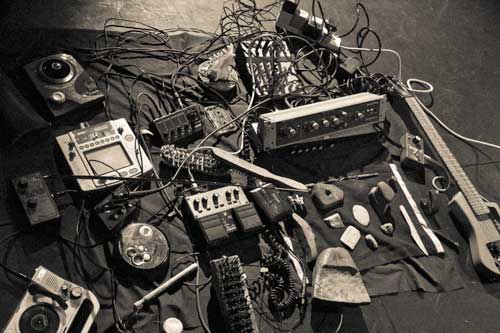
Sonic Abyss
Sonic Abyss was a series of group improvisation for the Drogheda Arts Festival 2012. Contributors from across Ireland combined sounds in different configurations, some of which are avilable on a free digital download from Farpoint Recordings.
May 2012
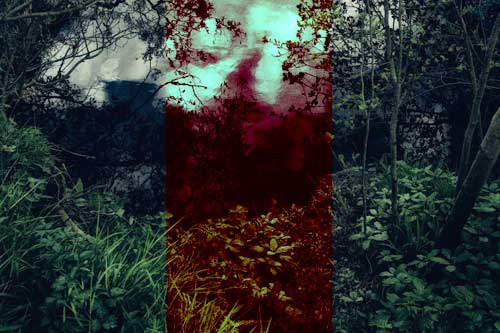
The Second Silence
“The Second Silence” is a composition for eight speakers that explores the dichotomy between noise and silence, and in particular how our perception of one changes in proximity to the other.
May 2012

Tank
Tank was a series of improvised performances, curated by Tony Langlois and Harry Moore. This instantiation featured Ed Devane, John Daly, Harry Moore, Mick O’Shea, and myself.
January 2012
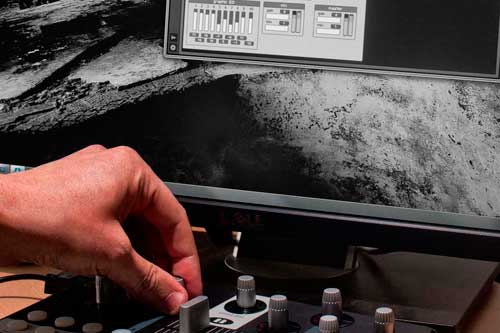
No Input Software System (Cybernetic Improvisation)
The “no source” mixing desks of Toshimaru Nakamura generate sound from the noise inherent in an electrical circuit. Similarly, the No Input Software System (NISE) enabled three live cybernetic improvisations throughout 2011, the results being released on CD.
December 2011

Certain Small Observations
We live in a sea of invisible traceries – some cultural, some biotic, some technological – that bind us one to the other, creating a social milieu. Like deep-sea fish we are blind to the electromagnetic fields in which we all swim. As we are similarly unaware of our bodies’ roles as conduits and amplifiers for these ubiquitous forces.
October 2011
![Tragedy of the Sun and Stars [publication]: book cover](img/poetics-tragedy-of-the-sun-and-stars-1.jpg)
Tragedy of the Sun and Stars
This book lies somewhere between fiction and fact, a strange hybrid of scientific discourse and poetic imagery, revealing a previously hidden world. It was launched with a reading at the Cuisle International Poetry Festival.
October 2011
![Academic Writing [course module]](img/teaching-academic-writing-2011-1.jpg)
Academic Writing
I taught this first year module in Social Studies at University College Cork. Students learned about academic style, structured papers, argumentation, and referencing.
October 2011
![Politics of Daily Living [course module]](img/teaching-politics-of-daily-living-2011-1.jpg)
Politics of Daily Living
I was a sessional lecturer for this Social Studies module at University College Cork. The unit covered how to organise, design, develop, and present a Poster. Along with the lecturing I supervised labs and evaluated a student assignment at the conclusion.
October 2011
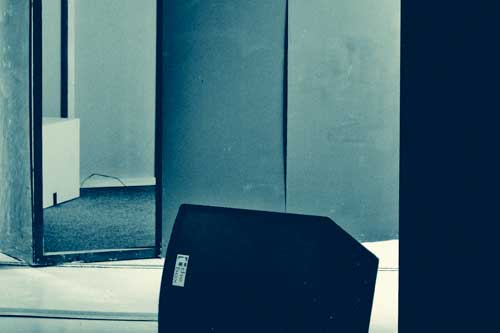
Apophenic Ecosystem C10 C30
This sound installation was comprised of 83 short tracks, sourced from cassette tape noise. These were played back at low volumes, as a subtle augmentation.
September 2011
![No Input Software: Cybernetics, Improvisation and the Machinic Phylum [conference paper]](img/paper-no-input-software-1-OMIT.jpg)
No Input Software: Cybernetics, Improvisation and the Machinic Phylum
Paper delivered at ISSTA 2011, the first convocation of the Irish Sound, Science and Technology Association, Limerick, Ireland.
Feedback describes a circuit (electronic, social, biological or otherwise) in which the output or result influences the input or cause. This paper examines how cybernetics were applied to musical systems by Louis Barron, David Tudor, and Toshimaru Nakamura. The author presents the No Input Software Environment (NISE), an implementation of a “no source mixing desk” that tests our faith in the digital realm as a site of perfect representation and replication.
August 2011
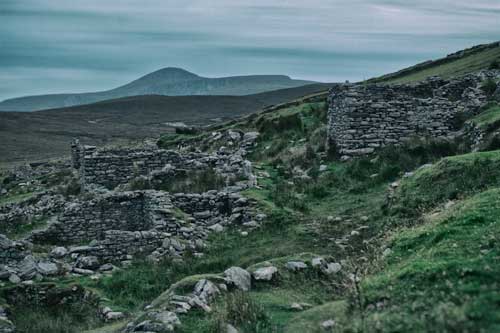
Deserted Village
This composition was sourced from the ambiance of the deserted village, Achill Island, County Mayo. The sound of the sheep bouncing between the field and mountain was incredible! It was included in To the Field and Yonder at the Gorey Arts & Film Festival.
August 2011

Induction Circuit
Induction Circuit is a self-directed walk that explores the secret domains and hidden sounds of Catherine Street (Limerick, Ireland). Setting off from a designated starting point with a music player and headphones, the participant is encouraged to experience familiar territory anew.
May 2011
![Strange Attractor [book cover, detail]](img/perform-strange-attractor-1-OMIT.jpg)
Strange Attractor
In this improvisation I played with Danny Mc Carthy, Irene Murphy and Mick O’Shea (Strange Attractor) in the lovely first floor room of the Crawford Art Gallery. The series was later documented by a book and DVD.
April 2011
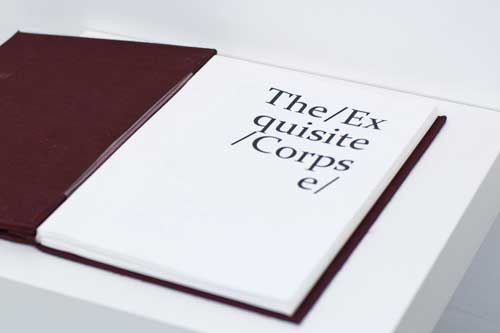
What Do I See?
“What Do I See?” was my contribution to the group show Exquisite Corpse [Five Senses], which was installed at the Soundfjord Sonic Art Gallery in London, over April 2011.
April 2011
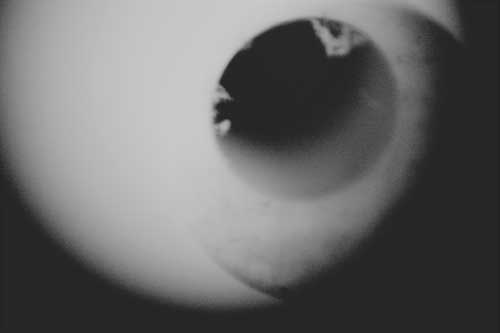
2003 UB313
“2003 UB313” celebrates the discovery of the solar system’s largest dwarf planet, Eris. It was included in the exhibit Sublimation: An Exercise in the Immersive at Oboro in Montréal, Canada.
April 2011
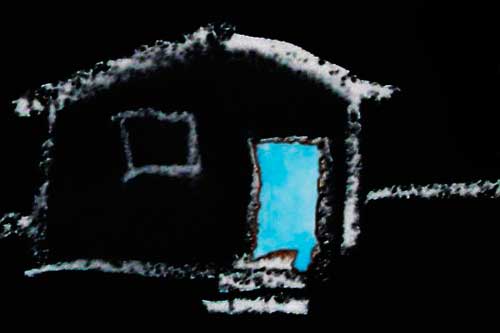
Snowblind and Falling
“Snowblind and Falling” foregrounds the textures of my own voice and verse, in homage to Beckett. This new piece continues my engagement with spoken word that dates back to my earliest radiophonic works. It was included on the CD Out of Silence (Modisti Records, Barcelona).
March 2011
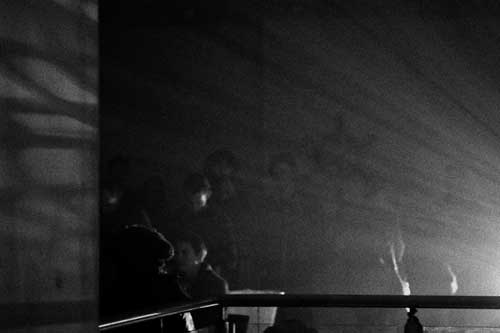
Valentine's Day gig
An untitled piece for electric guitar and blender was performed on this “night of music, art, partying, and apocalyptic love”, when I opened for Our Love Will Destroy The World (AKA Campbell Kneale).
February 2011
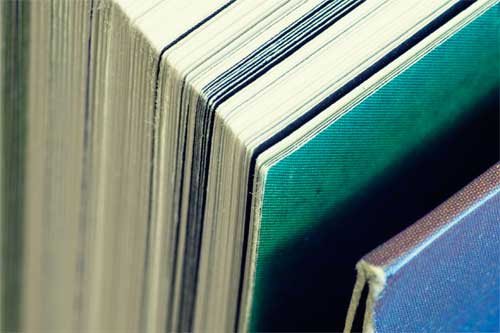
Fold Penetration
This 12 minute-long composition was created from a single sample of one second duration, for the Invisible Frequencies Bookworm project.
January 2011
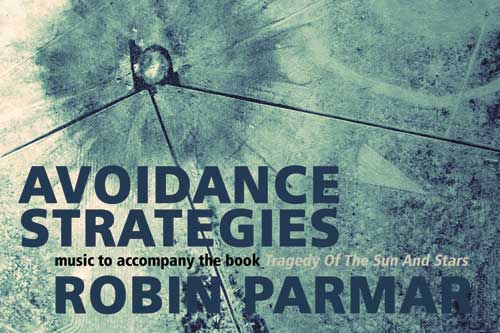
Avoidance Strategies
This album was created entirely with feedback loops within a custom software system. Each evolving sonic ecosystem was played live as an improvisation between person and machine. The resulting complexity belies the fact that no samples, synthesisers, overdubs, editing or post-production was applied.
January 2011
![Radiophonics, Sound Art, and Intermedia Art [course module]](img/teaching-radiophonics-sound-art-2011-1.jpg)
Radiophonics, Sound Art, Intermedia Art
I was lecturer for this Masters module at the Digital Media Research Centre (DMARC), University of Limerick. The material was entirely original, covering radiophonics, sound art, installations, phonography and sound ecology, electroacoustic performance, and improvisation.
January 2011
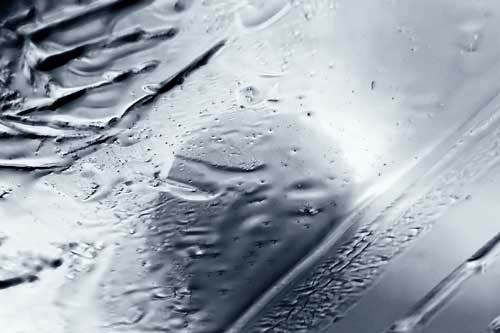
Qarun Hydrophone Death
This track was originally created for the Mer-Wer project, using original and manipulated sounds by a recording collective. It was then programmed as part of the Hilltown New Music Festival 2010.
December 2010
![Some Notes on Sound Installations [seminar]](img/teaching-some-notes-on-sound-1.jpg)
Some Notes on Sound Installations
I gave this seminar for media students at the CCMCM (later DMARC), at the University of Limerick. It focused on my approaches to sound installation, in particular my commission for ev+a that resulted in “The Lights in Room 7”.
September 2010
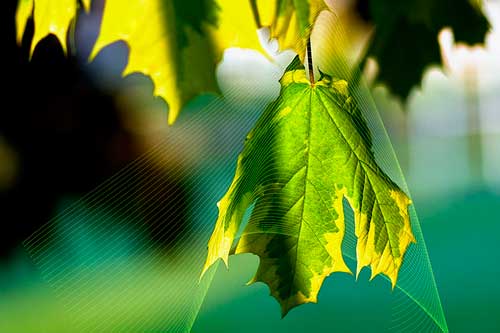
wave, particle, falling leaves
This edited four-channel version of “wave, particle, falling leaves” was played at The Dragonfly Multi-Arts Festival, held at a bronze-age settlement and open-air museum near Gothenburg, Sweden.
August 2010
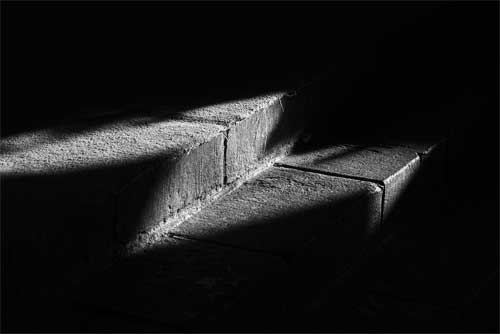
OPENED3:SPATIAL
I created a sound environment using sine tones and field recordings. This was diffused live, accompanying thirteen dancers, choreographed by Edd Schouten.
July 2010
![Forgetting Interactivity: Notes Towards a Typology [conference paper]](img/paper-forgetting-interactivity-1.jpg)
Forgetting Interactivity: Notes Towards a Typology
Paper delivered at Interactivity and the Audio Arts, University of Kent, UK.
This paper develops a typology of interactivity, defined according to the roles played by various entities within the system. Along the way, the paper challenges the contemporary assumption of the necessity for a computer in the system, considers the problematic inherent in the oxymoron “virtual reality” and explores the mirror form in relationship to the interactive.
June 2010
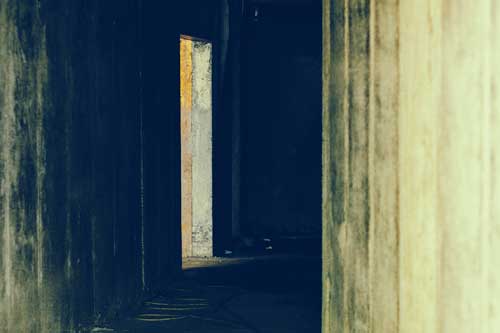
Realm of Circulation
This piece was played on the Sonic Art Jukebox as part of the SoundFjord Gallery Open Day.
May 2010
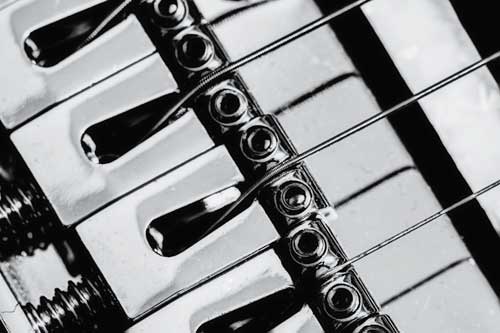
Induction Ritual
This thirty minute-long radio programme explores the electric guitar as a tactile surface that generates sound through electromagnetic induction. It was prepared especially for the RadiaLx international radio art festival.
May 2010
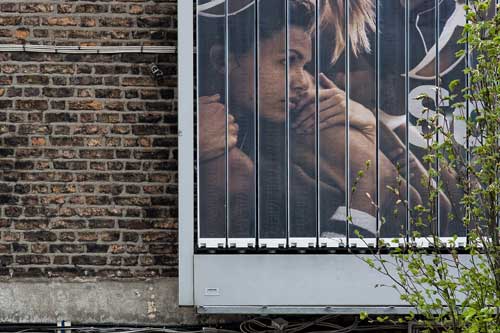
Catherine Street Augmentation
This playful investigation into acoustic memory overlays the actuality of a public street with sounds recorded at the same location one week earlier.
May 2010

Poems of Love, Death, and Nasal Surgery
On a cold day in February I was the featured reader at The White House Pub, Limerick.
February 2010
![The Lights in Room 7 [installation]](img/install-lights-in-room-1-OMIT.jpg)
The Lights In Room 7
This site-specific sound installation was commissioned by curator Elizabeth Hatz for Ireland’s art biennale, “EV+A 2010 Matters”. The installation augmented the acosutics of the room with processed recordings of the flourescent lights.
January 2010
![The Limerick-Toronto Subway Line [installation and performance]: poster](img/perform-limerick-toronto-subway-1.jpg)
The Limerick-Toronto Subway Line
This site-specific electroacoustic performance created a fictional place by merging recordings of the Toronto subway system with a live feed from the busy street outside the café. The piece was an exploration of sonic memory and place formation.
September 2009
![Ouroboros [installation and performance]: poster](img/perform-ouroboros-1-OMIT.jpg)
Ouroboros
This sonic performance involves a feedback loop between a microphone and radios placed about the room. This loop is manipulated through proximity, induction and other effects of the performer’s body on the system.
September 2009
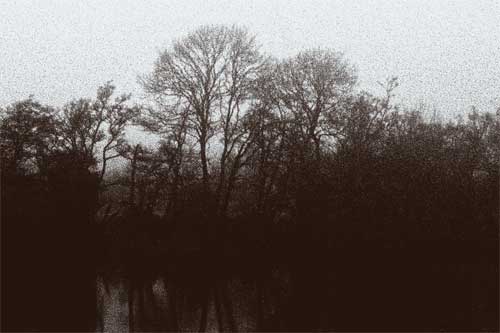
"The Garden of Adumbrations": An Anecdotal Soundscape
This thesis examines R. Murray Schafer’s conception of the “soundscape”, Pierre Schaeffer’s “acousmatic”, and the “anecdotal” works of iconoclast Luc Ferrari. Overviews of musical time scales, sound ecology, spatial perspectives, reduced listening, and schizophonia are undertaken along the way.
September 2009
![The Absence of Baudrillard [performance]](img/perform-absence-baudrillard-1.jpg)
The Absence of Baudrillard (performance)
An electroacoustic improvisation performed in a bookshop in Mainz, Germany, to commemorate French philosopher Jean Baudrillard.
October 2008
![Complementarity: An Archipelago [book chapter]](img/paper-complementarity-1.jpg)
Complementarity: An Archipelago
Chapter in the book Framemakers: Choreography as an Aesthetics of Change, published by Daghdha, Ireland.
Niels Bohr used the term complementarity to explain how, in order to appreciate reality, we must balance two contradictory concepts in our mind at the same time. This chapter connects quantum foam, childhood nightmares, the measurement of sound, the pigeonhole principle, musical chairs, Alexander’s pattern language, post-punk musicians Wire, the Observer Pattern, and cybernetics.
October 2008
![The Stony Thursday Book No. 6 [book cover, detail]](img/poetics-saint-1-OMIT.jpg)
The Saint
“The Saint” is one of my most popular poems, one that pokes loving fun at my native country of Canada. It was published in The Stony Thursday Book No. 6 (ed. John Liddy).
October 2007
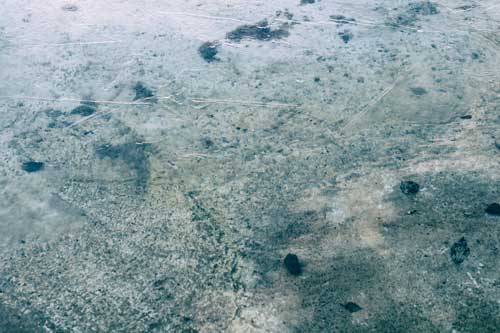
Pack Ice
“Pack Ice” was included on the music compilation Endless Endless 5, a product of Sheffield label Audiobulb. The web archive is defunct, but the piece is now available on my album The Drones.
September 2007
![escalation 372 Live in Galway [performance]: poster](img/perform-escalation-372-1.jpg)
escalation 372 live in Galway
Live electronic gig with vocalist Susannah Clare, at a Stress!! event at De Burgo’s in Galway.
June 2007
![Jean Baudrillard: How to Disappear Completely [article]](img/paper-how-to-disappear-completely-1.jpg)
Jean Baudrillard: How to Disappear Completely
This short appreciation, following the death of Jean Baudrillard, appeared in The International Journal of Baudrillard Studies.
March 2007
![The Rite of Spring [performance]](img/perform-rite-of-spring-1.jpg)
The Rite of Spring
This audacious re-interpretation of Stravinsky’s “The Rite of Spring” was choreographed by Katarina Mojzisova. Three young dancers were set to dance in a shopping mall. My contribution was audio design and sound operation.
March 2007
![Granulation Knaves [performance]](img/perform-granulation-knaves-1.jpg)
Granulation Knaves
Performance as escalation 746, opening for KK NULL at a Soundings concert. On stage I played a guitar stripped of its strings and a Nokia mobile phone, fed through Reaktor software synthesis.
October 2006
![The Stony Thursday Book No. 5 [book cover, detail]](img/poetics-owl-1-OMIT.jpg)
The Way of the Owl
“The Way of the Owl” is one of my own favourite poems. It was published in The Stony Thursday Book No. 5 (ed. Knute Skinner).
October 2006
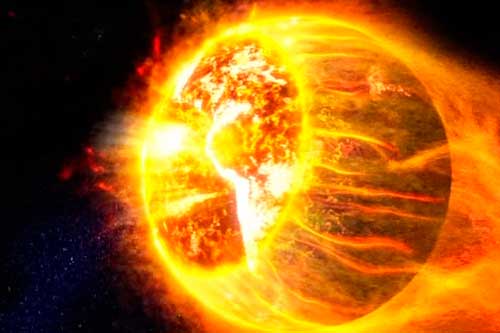
Time and Reality Die in Spectacle: Doctor Who as the Perfect Crime
The 2005 reboot of the television serial Doctor Who follows a time-traveller named The Doctor. We soon learn that his race and planet have long ago been destroyed. The same fate is in store for Earth, its immolation a spectacle for galactic tourists. Subsequent episodes are played out in the shadow of this predestined apocalypse. By returning to the present we escape our human end, but in so doing infect reality with a principle that erases its meaning. The perfect crime is constituted in the very hypothesis of time travel that gives this programme life.
September 2006
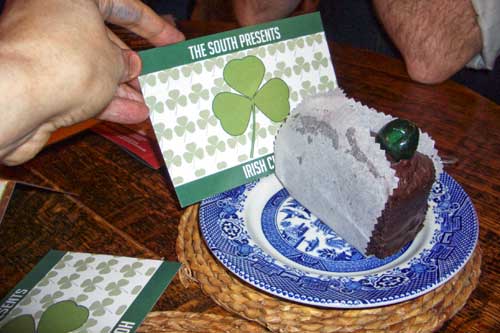
Brighton Poetry & Book Festival
I was pleased to be invited for a reading at the Brighton Poetry & Book Festival 2005, as part of a special focus on Irish literature. Several of us made the trip across the water… to be greeted by this cake!
December 2005
![An Introduction to Sound Art [seminar]](img/teaching-introduction-to-sound-art-1.jpg)
An Introduction to Sound Art
This seminar at the University of Brighton presented sounds most people had never heard, in order to inspire wonder in sonic possibilities. To this end I played everything from dolphins in the Red Sea to outer atmospheric magnetics.
December 2005
![Microphone On [book cover, detail]](img/poetics-microphone-on-1-OMIT.jpg)
Microphone On
Microphone On was the largest anthology of its kind, a document of years of poets reading at the White House in Limerick. I was copy editor, designer, and co-editor for this important document.
August 2005
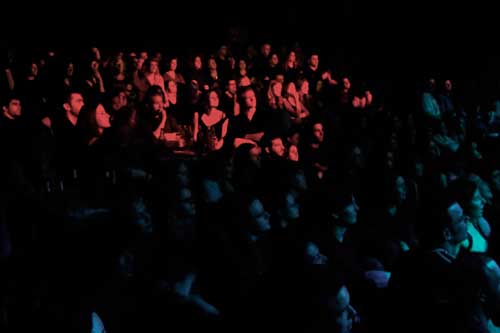
Hammer & Tongue International Slam Competition
This was one of my strangest experiences, on the Irish team for a poetry slam in Oxford, in front of an audience of hundreds, being filmed for broadcast, and meeting some of the best live poets from Canada, USA, and the UK.
February 2005